Further afield: The Death Valley Mine that isn't anywhere near Death Valley

The First False Advertising
It’s easy to be misled by the name since the Death Valley Mine isn’t actually in Death Valley National Park at all. This historic mining site lies roughly 70 miles southwest of Death Valley, on the northeast slope of the New York Mountains in the Mojave National Preserve. The mine’s peculiar name remains something of a mystery; prospector J.L. Bright, who discovered the site in 1906, may have simply chosen an attention-grabbing title despite its distance from the real Death Valley. What’s certain is that this remote location, near the old railroad depot of Cima, quickly became a bustling desert camp in the early 20th century. Below, we delve into the rich history of Death Valley Mine, its boom and bust, the ore that drew fortune-seekers, and how its remains survive today amid Joshua tree forests of the Mojave.
Gold, Silver, and the Dawson Camp Boom
In the spring of 1906, J.L. Bright of Kelso, California struck paydirt in the high desert and staked what he called the Death Valley Mine. By July of that year, he had sold his claim to a Denver-based outfit, the Death Valley Gold Milling and Mining Company, run by the Dawson brothers. The new owners established a mining camp named Dawson (after themselves) to house workers and serve as a base of operations. Almost immediately the mine showed promise: rich veins of ore were uncovered that contained silver, lead, and some gold, with assays reportedly running as high as 634 ounces of silver and 0.48 ounces of gold per ton. In other words, Death Valley Mine was essentially a high-grade silver mine with valuable byproducts of gold and lead.
By September 1906, the first wagonloads of ore were rolling out. Teams of up to twelve horses hauled wagons full of ore from Dawson camp to the railhead at Cima. From there, the ore rode the freshly built Salt Lake Railroad (LA&SL) south to a smelter in Needles, California. This efficient transport link, a product of the era’s railroad boom, allowed even such a remote mine to ship its product to market. Death Valley Mine wasn’t alone in the area; a neighboring claim called the Arcalvada Mine adjoined it to the northwest, and both mines prospered side by side, working those rich lead-silver veins.
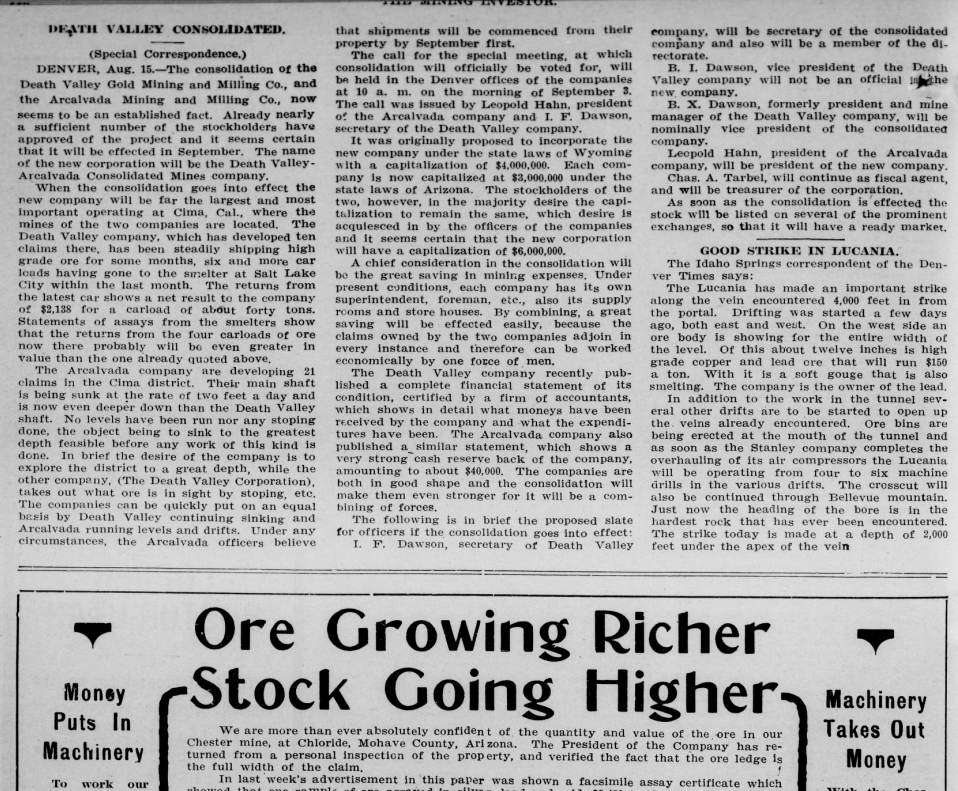
The boom was on. By late 1907, the Death Valley Mine and Arcalvada Mine merged to form the Death Valley–Arcalvada Consolidated Mining Company, uniting their operations. Contemporary reports celebrated the growth: by November 1907 about 75 men were employed in the camp, and Dawson had the bustling atmosphere of a bona fide boomtown. A post office, saloon, or other typical trappings of a town aren’t well documented here, but Dawson Camp became a key home base for miners working not only at Death Valley Mine but other prospects in the region. The ore continued to flow and in January 1907 the first shipments were sent further afield to the American Smelting and Refining Company in Salt Lake City. For a brief time, this corner of the East Mojave Desert earned a place in California’s mining narrative alongside more famous strikes.
Prosperity, Conflict, and a Fiery End
Like so many mining ventures, Death Valley Mine’s early prosperity met with obstacles. In mid-1908, just about two years into operation, legal troubles hit and ownership disputes or other litigation put a halt to the frenetic development. The courtroom battles dragged on for years (from 1908 until 1915) and the mine lay mostly idle during that time. A few hardy miners kept picking away at the ore in those lean years, but the real action didn’t resume until 1915 when a new owner finally cleared the title and took over.
Under new management, Death Valley Mine entered a second phase. The period 1915–1921 is often cited as the peak of production, especially the years around World War I. High demand for lead (for bullets and batteries) and silver helped spur renewed mining. The company pumped water out from the deep shafts and reopened tunnels. By the late 1910s the site was again humming with activity, yielding steady if not spectacular profits.
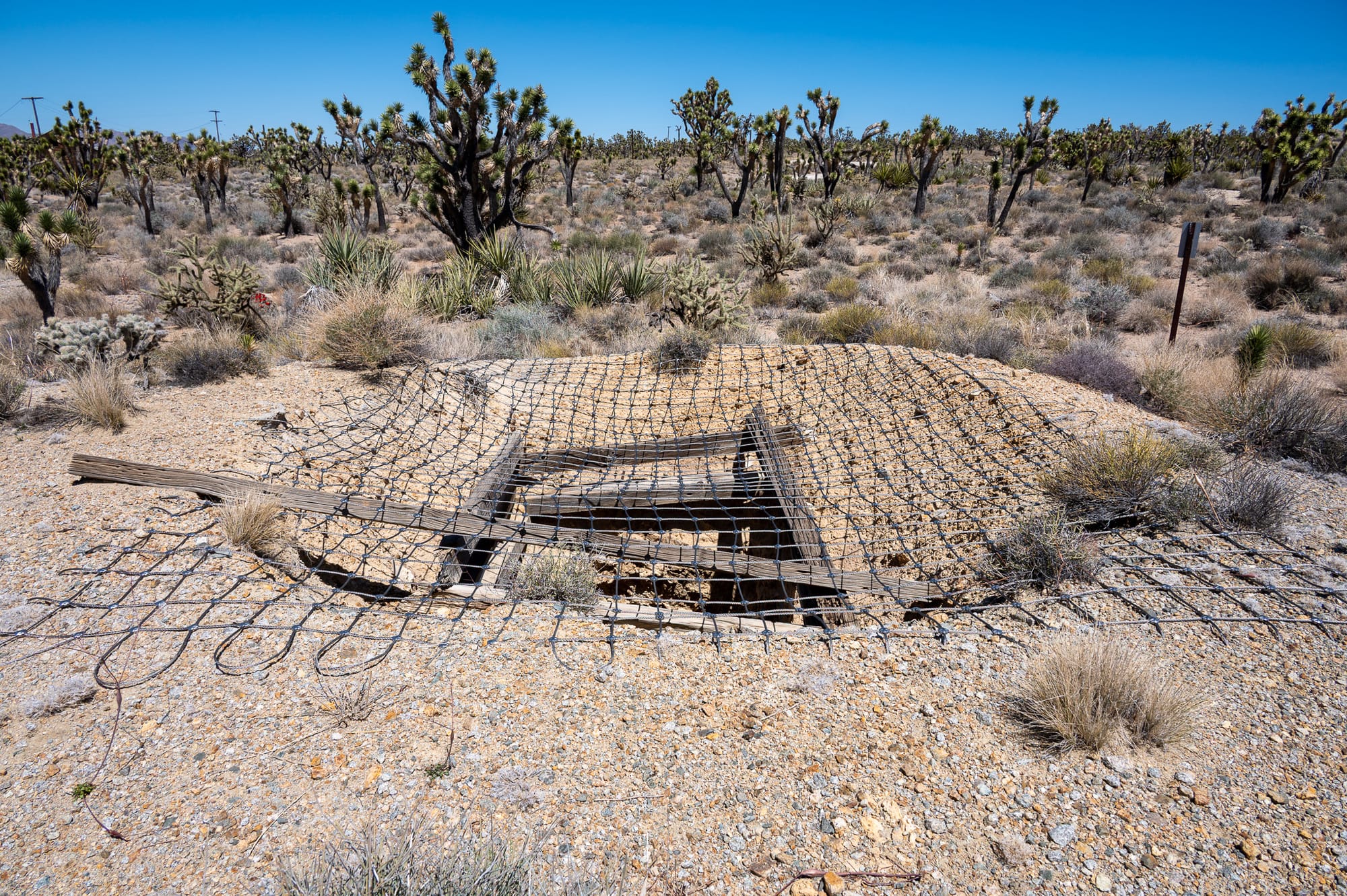

The original Arcalvada shaft on the left and another collapsed working from the early era of the Death Valley Mine on the right.
However, the desert is nothing if not unforgiving. On June 11, 1927, disaster struck: a fire erupted that destroyed the mine’s surface plant and mill facilities. Flames consumed the structures that processed the ore, and even parts of the underground workings collapsed or were made inaccessible. This calamity effectively marked the end of large-scale operations. Records indicate that by the time of the fire, the mine had produced about $131,000 worth of ore in total (approximately $3.5 million in today’s dollars when adjusted for historic gold and silver prices). Notably, about $93,000 of that output was earned before 1915, showing how important that early 1906–1908 boom had been.
Yet even after the fire, there were attempts to stay alive. In 1930, observers noted that a substantial camp remained on site including a thirty-ton ore concentration plant and a six-room boarding house (residence) to accommodate workers. This suggests that the owners may have tried to rebuild or rework leftover ore piles in the late 1920s or early 1930s. Indeed, some reports claim the mine was productive (perhaps on a smaller scale) up until about 1931. But the Great Depression soon undercut metals prices, and Death Valley Mine faded into dormancy. The once-bustling Dawson Camp emptied out, leaving only a skeleton crew to watch over the property.
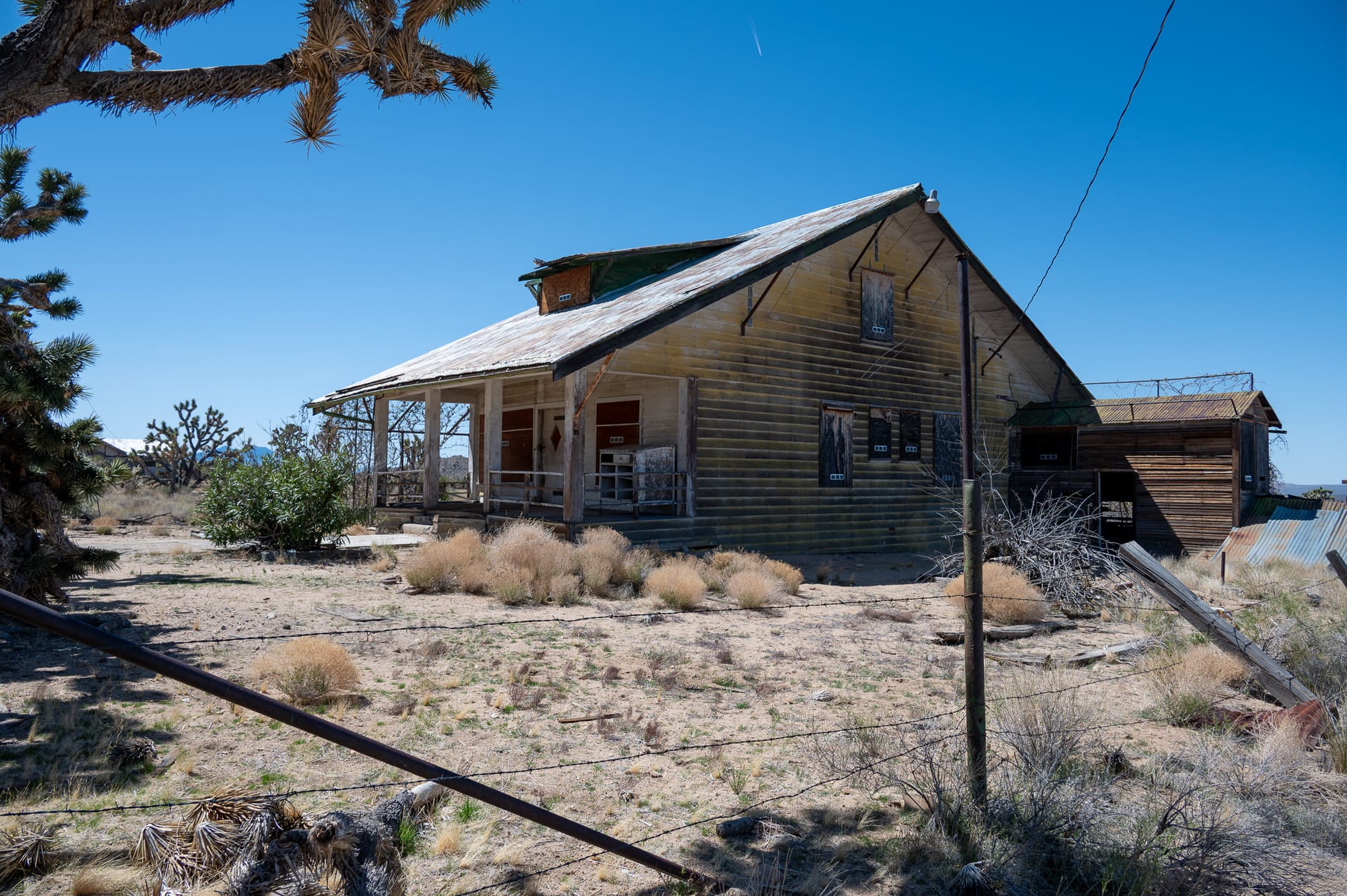
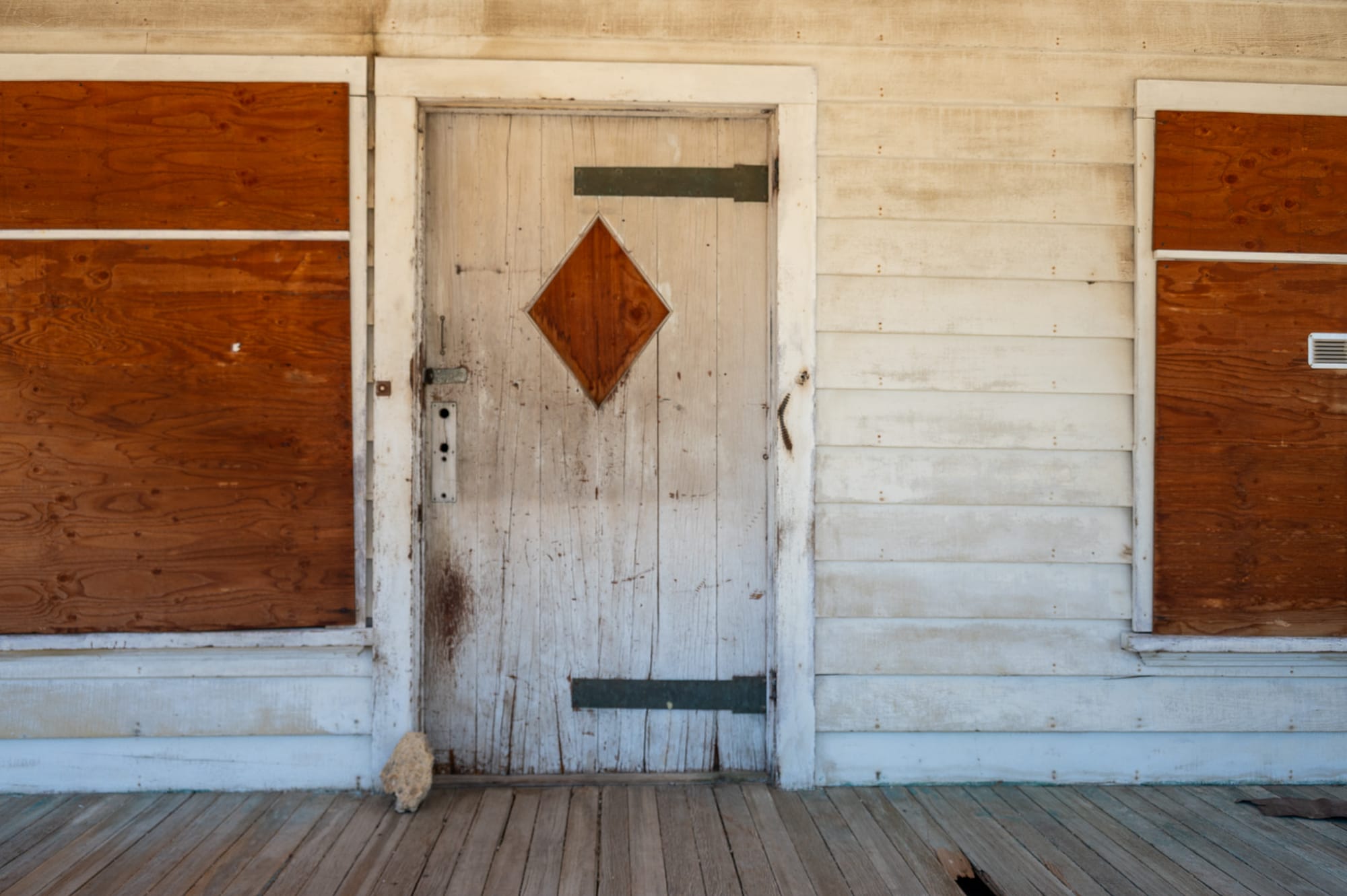
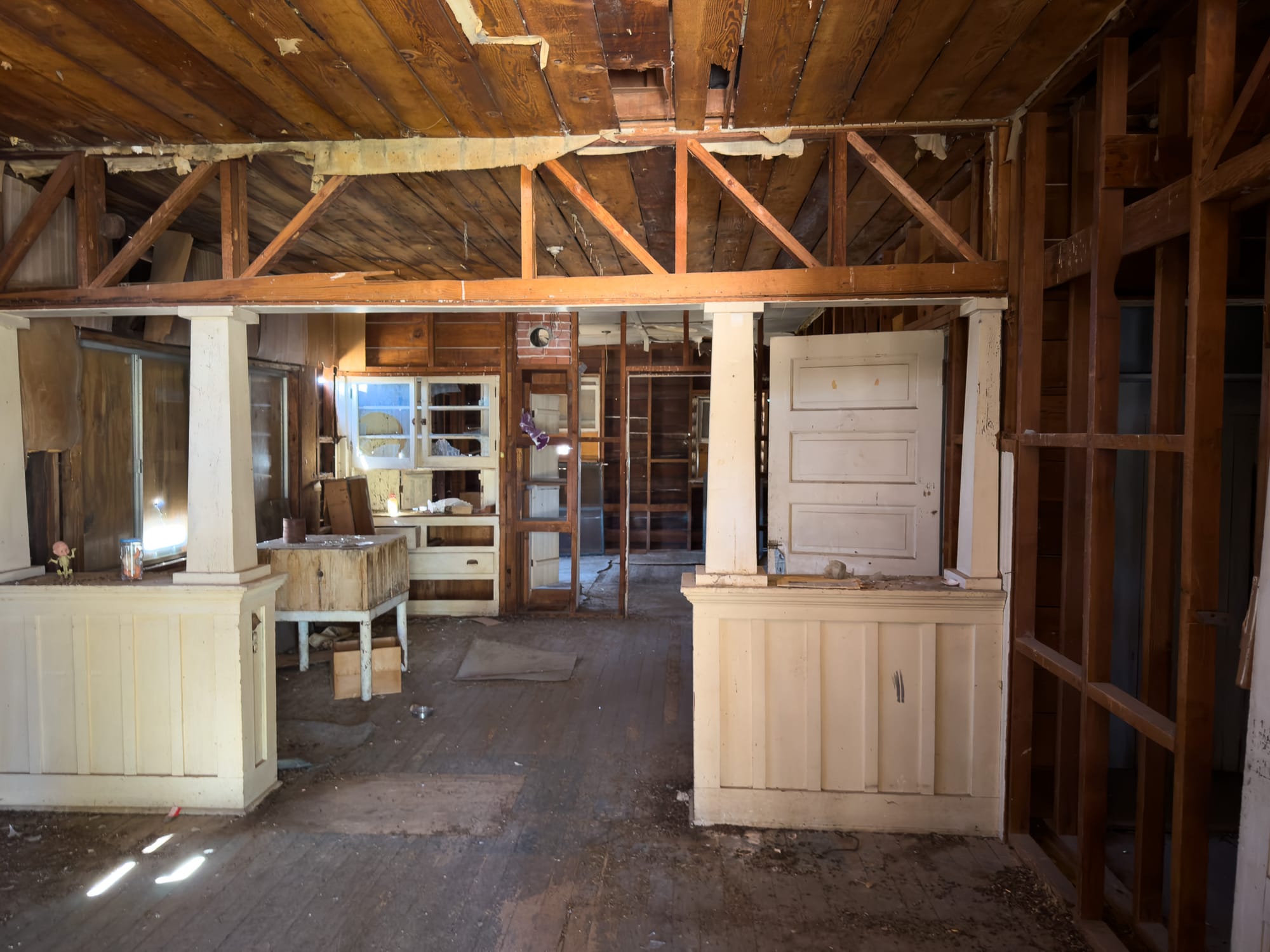
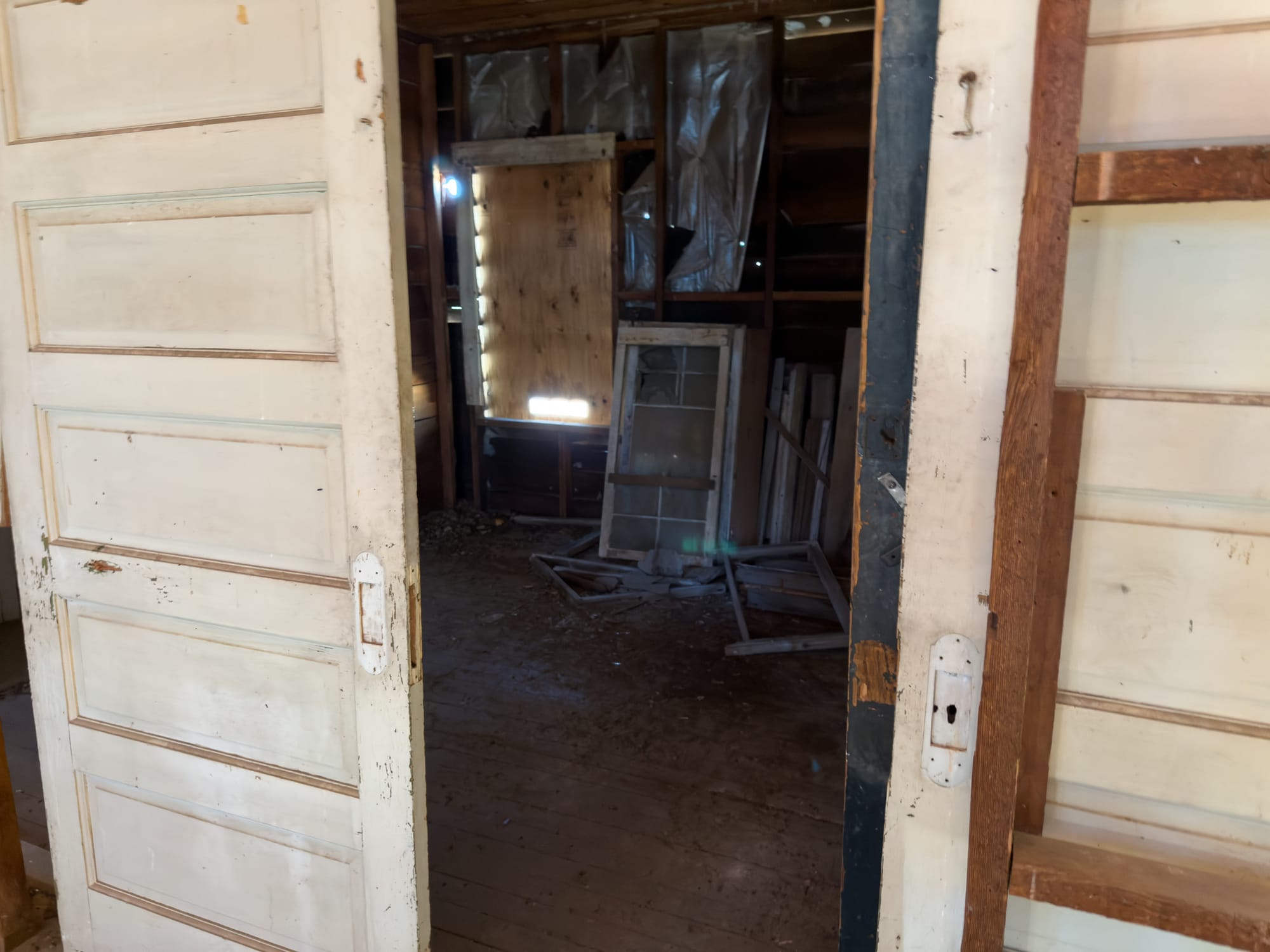
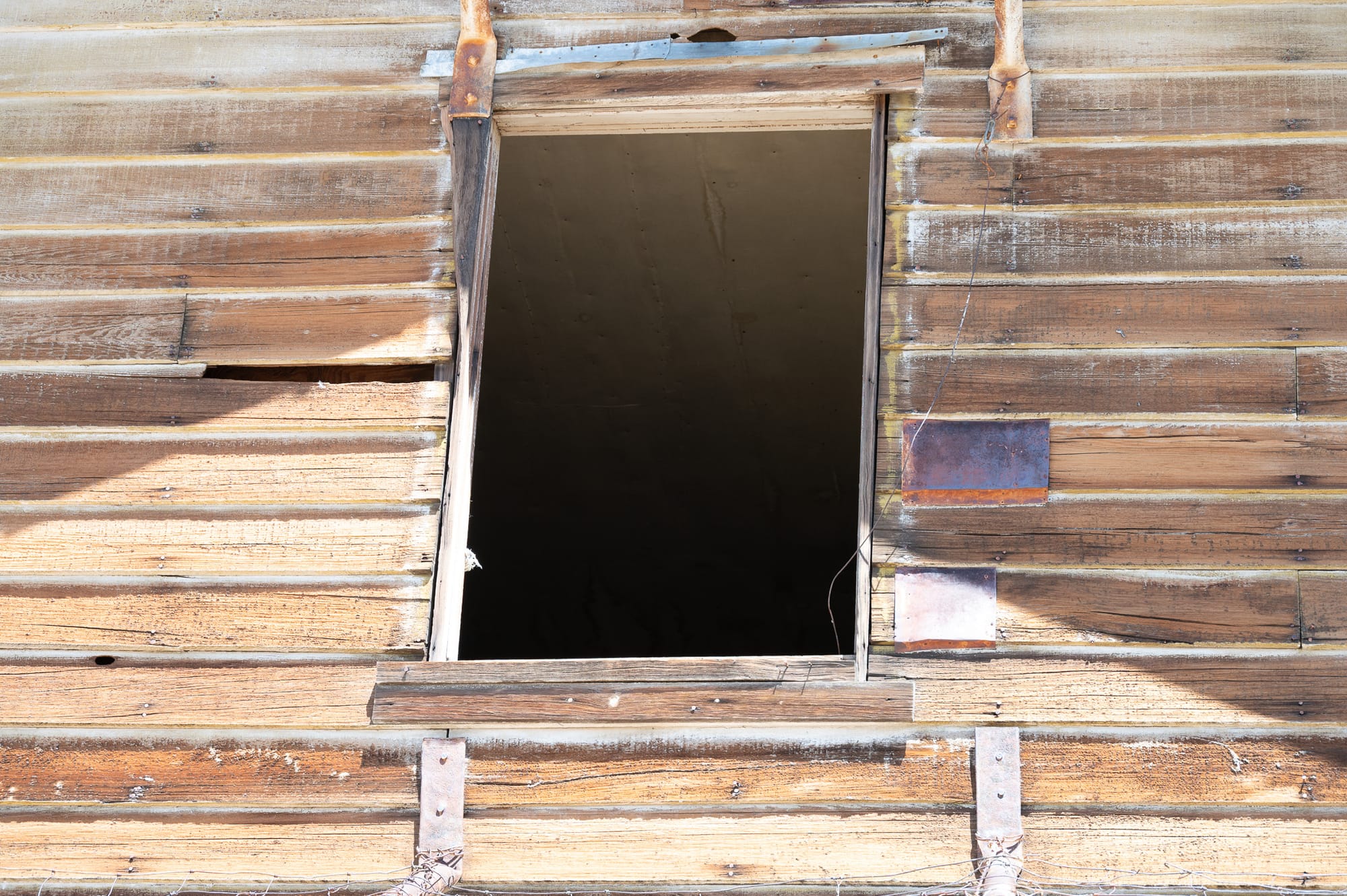
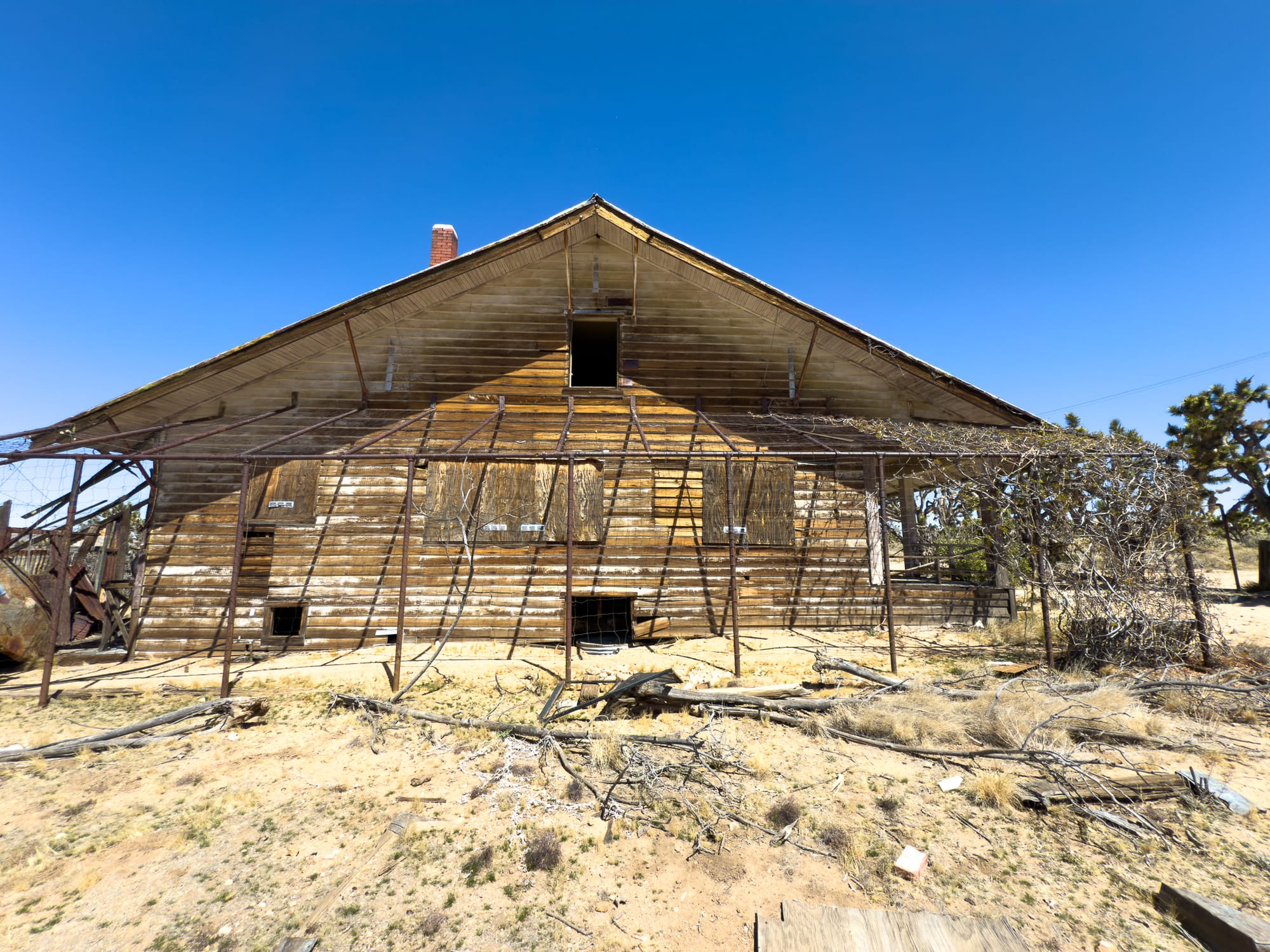
The 1910 mine superintendent's house was a two story home and, based on some poking around the interior, was very nicely apportioned. Today it's slowly succumbing to time and has a scary ghost movie window on the second floor.
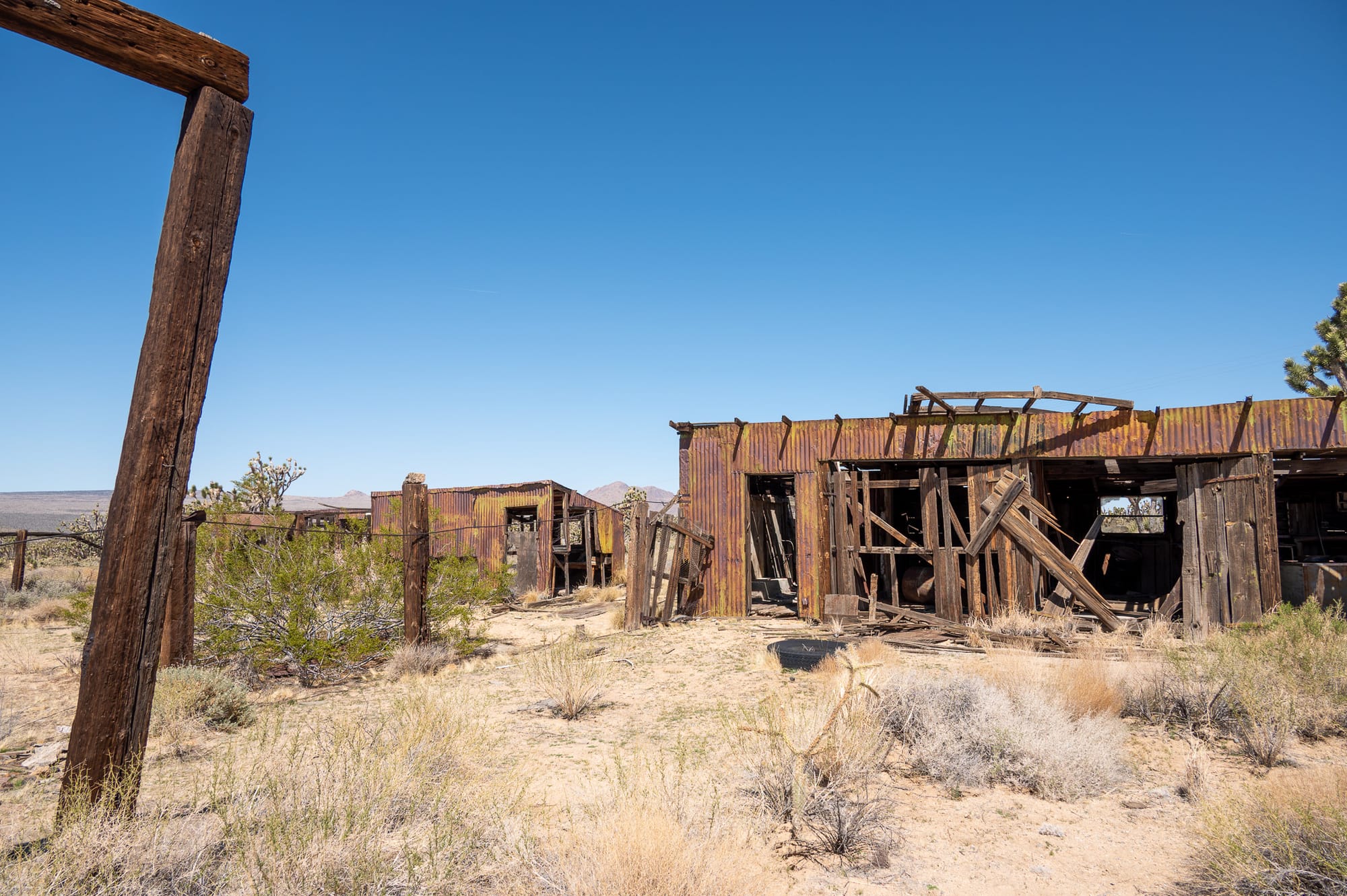
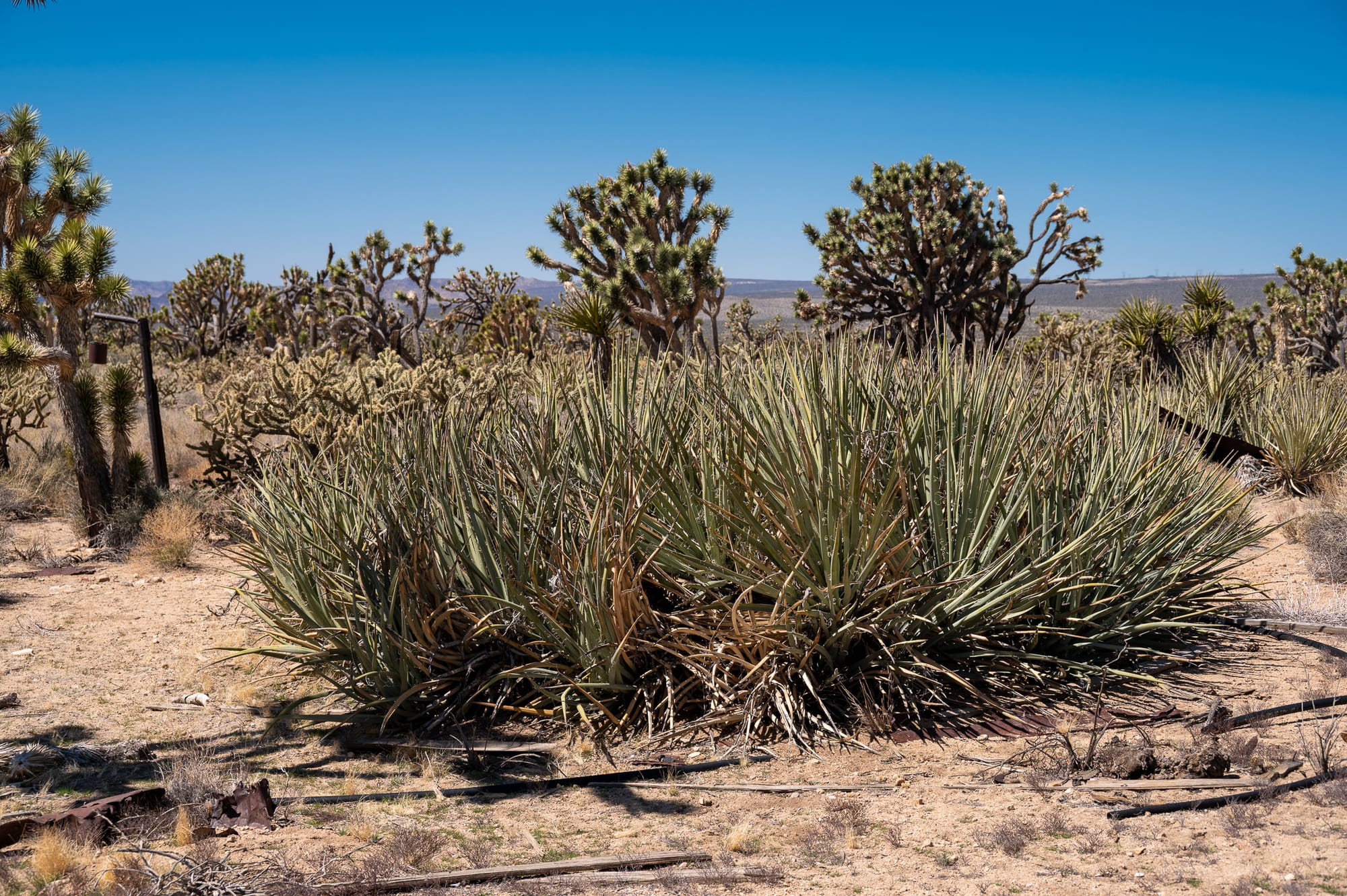
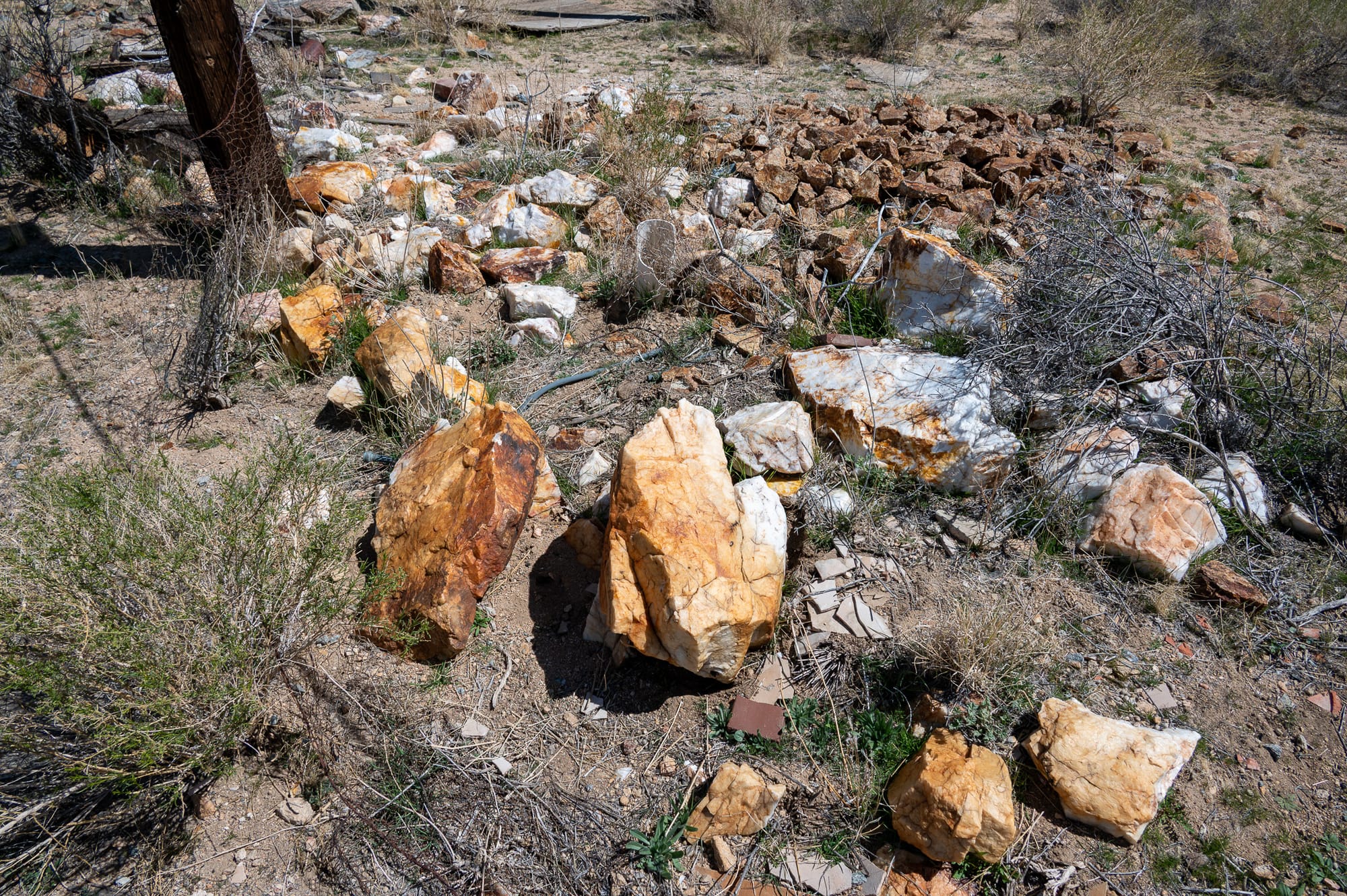
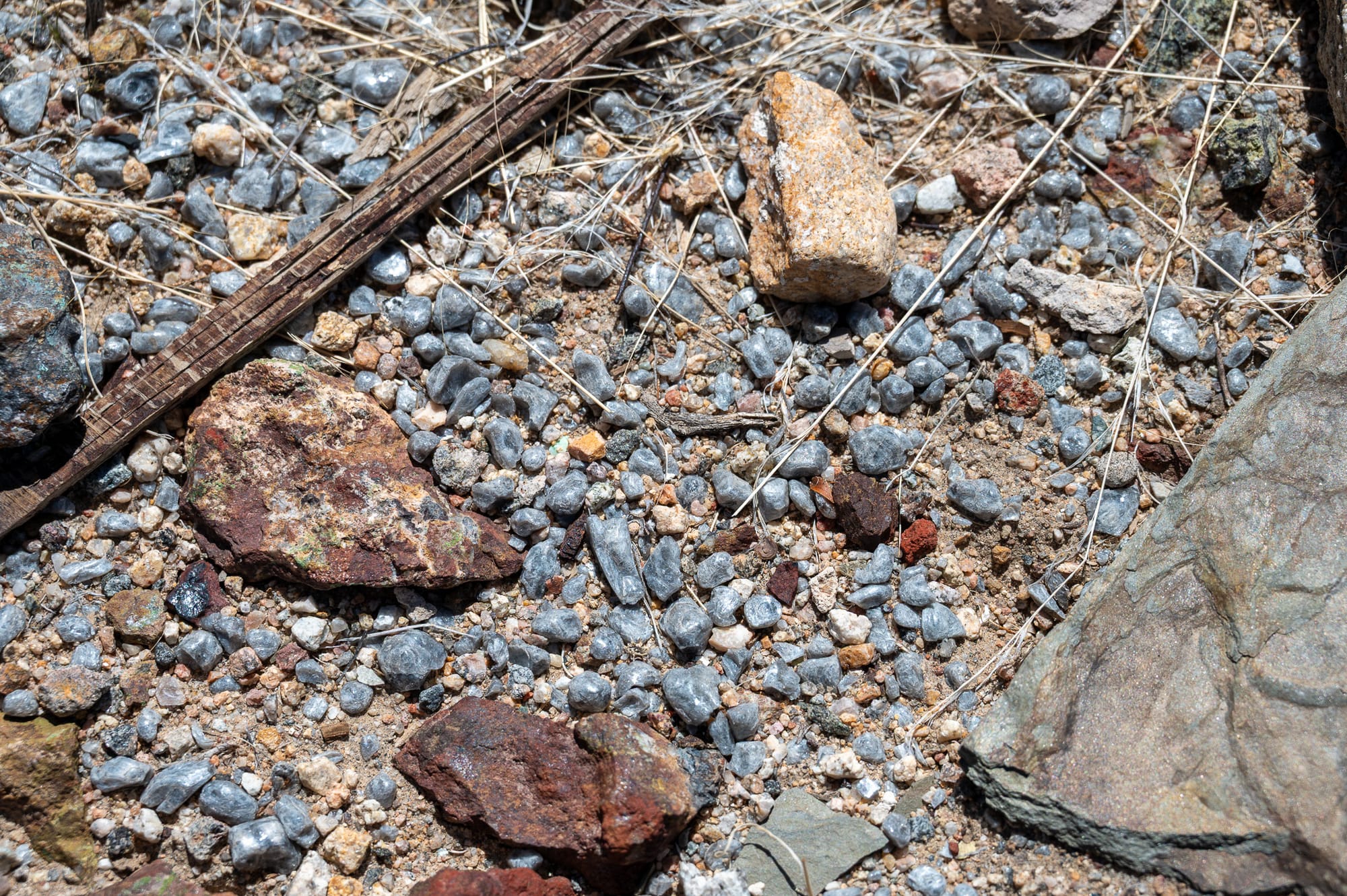
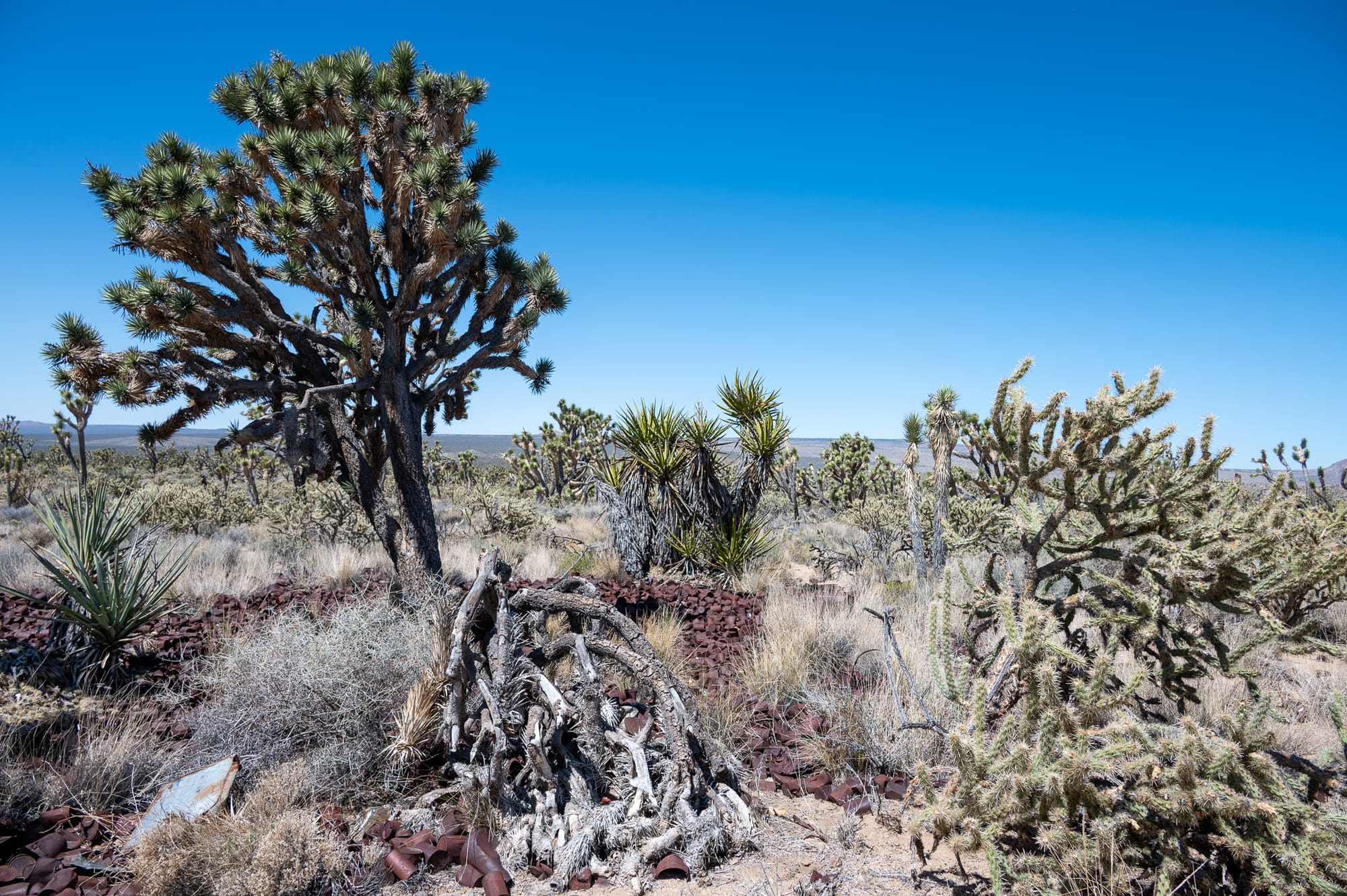
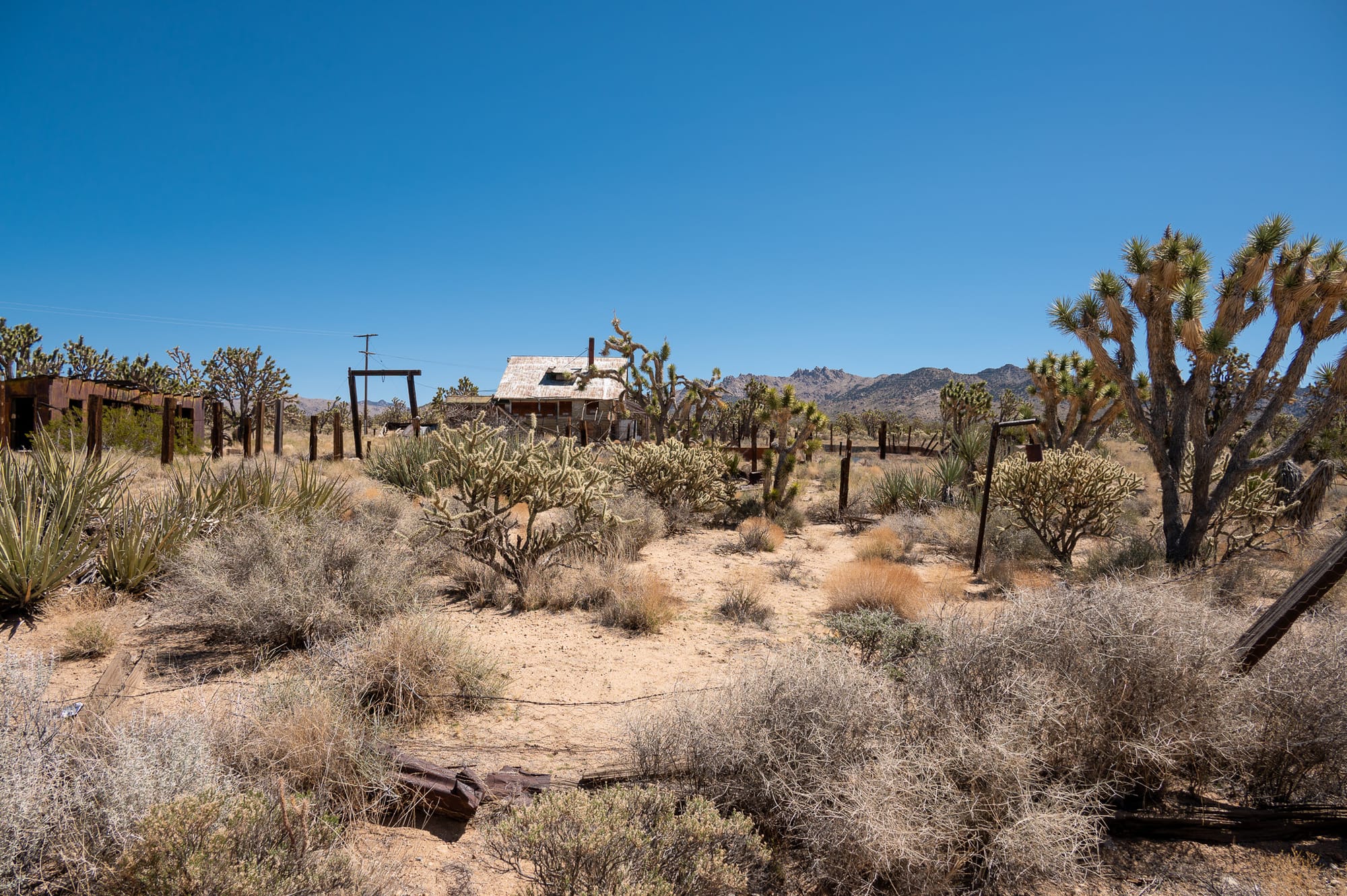
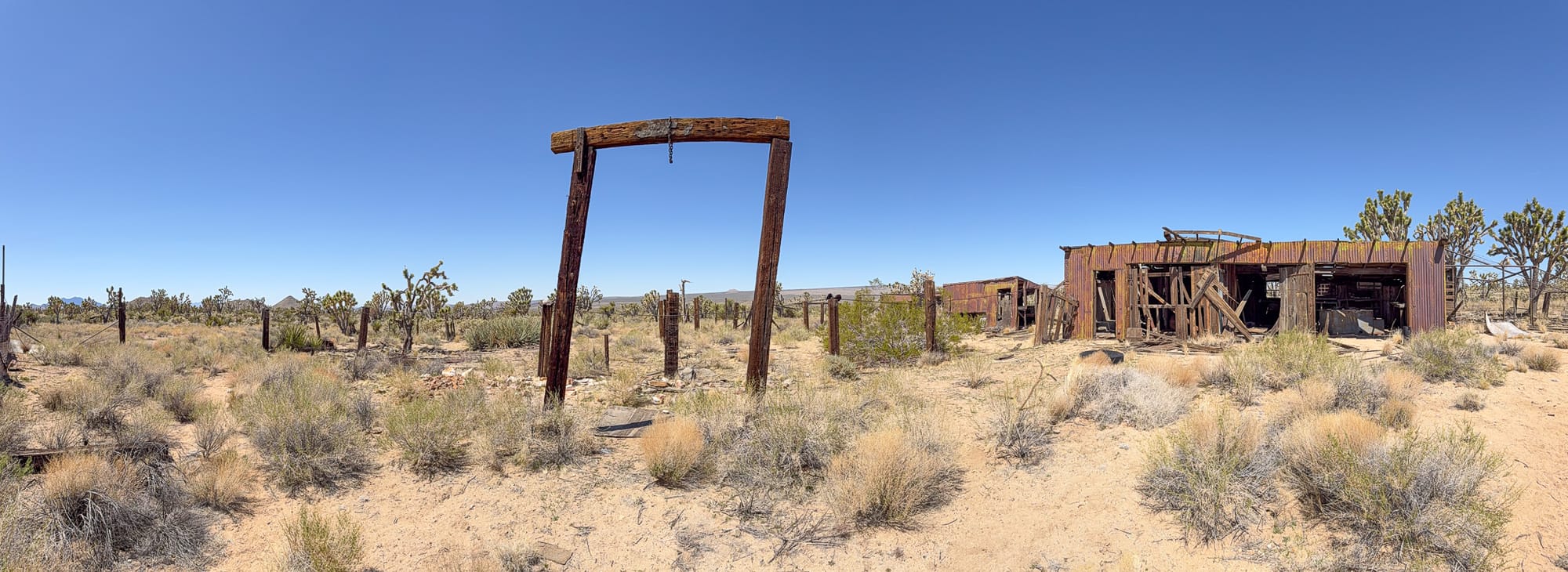
Top Left: The stables/garage. Top center: A giant agave growing in the garden area of the main house. Top Right: mineralized rock dumped behind the house. Middle Left: slag pellets from assaying. Middle Right: the main house's can dump. Bottom Left: Looking back to the main house across the rancho. Bottom Right: panorama of the ranch buildings and corral.
Revival Attempts and the Long Silence
Mining never truly lets go easily. World War II brought a federal shutdown of gold mining (Order L-208), but by the 1950s there was one last revival at Death Valley Mine. New technology and a post-war hunger for minerals led a small operation to rework the site. An unusual steel headframe (the structure above a mine shaft) was installed during this era, and much of the equipment littering the site today: rusting trucks, a Blake-type rock crusher, and a rod mill, all dates from the 1950s reactivation. Exactly how much ore (if any) was profitably extracted in the 50s is unclear, but this period did stave off complete abandonment for a time.

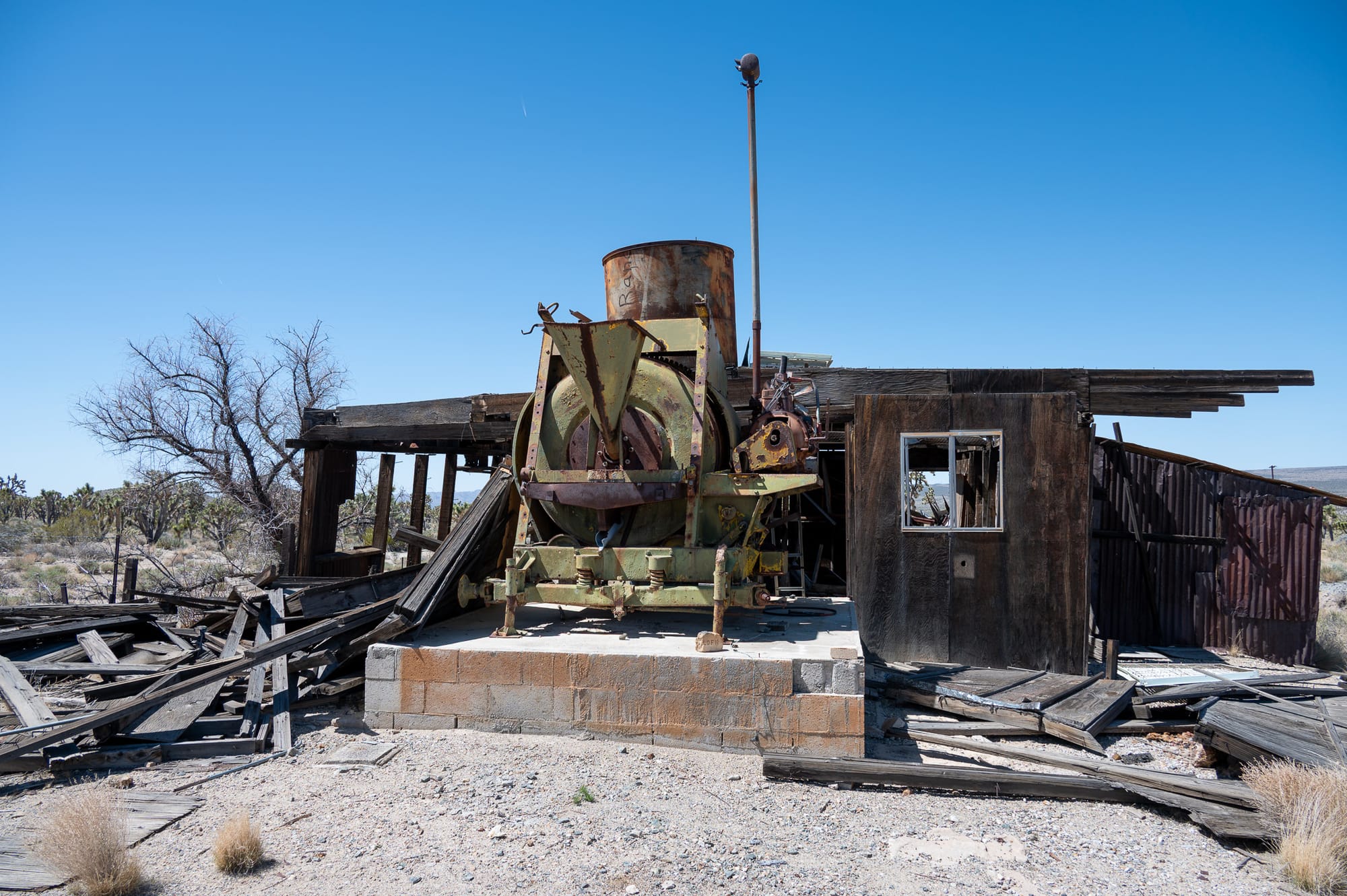
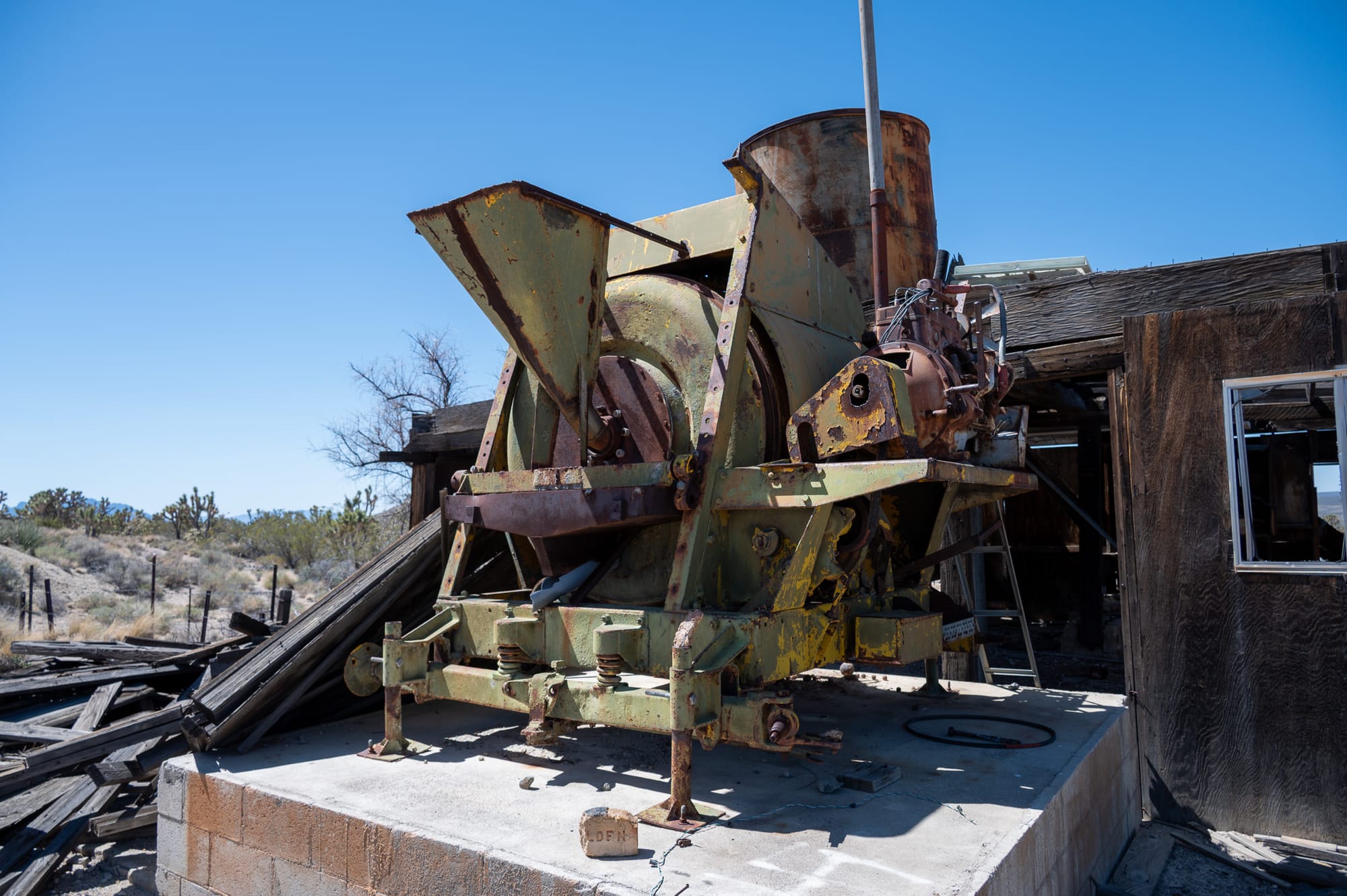
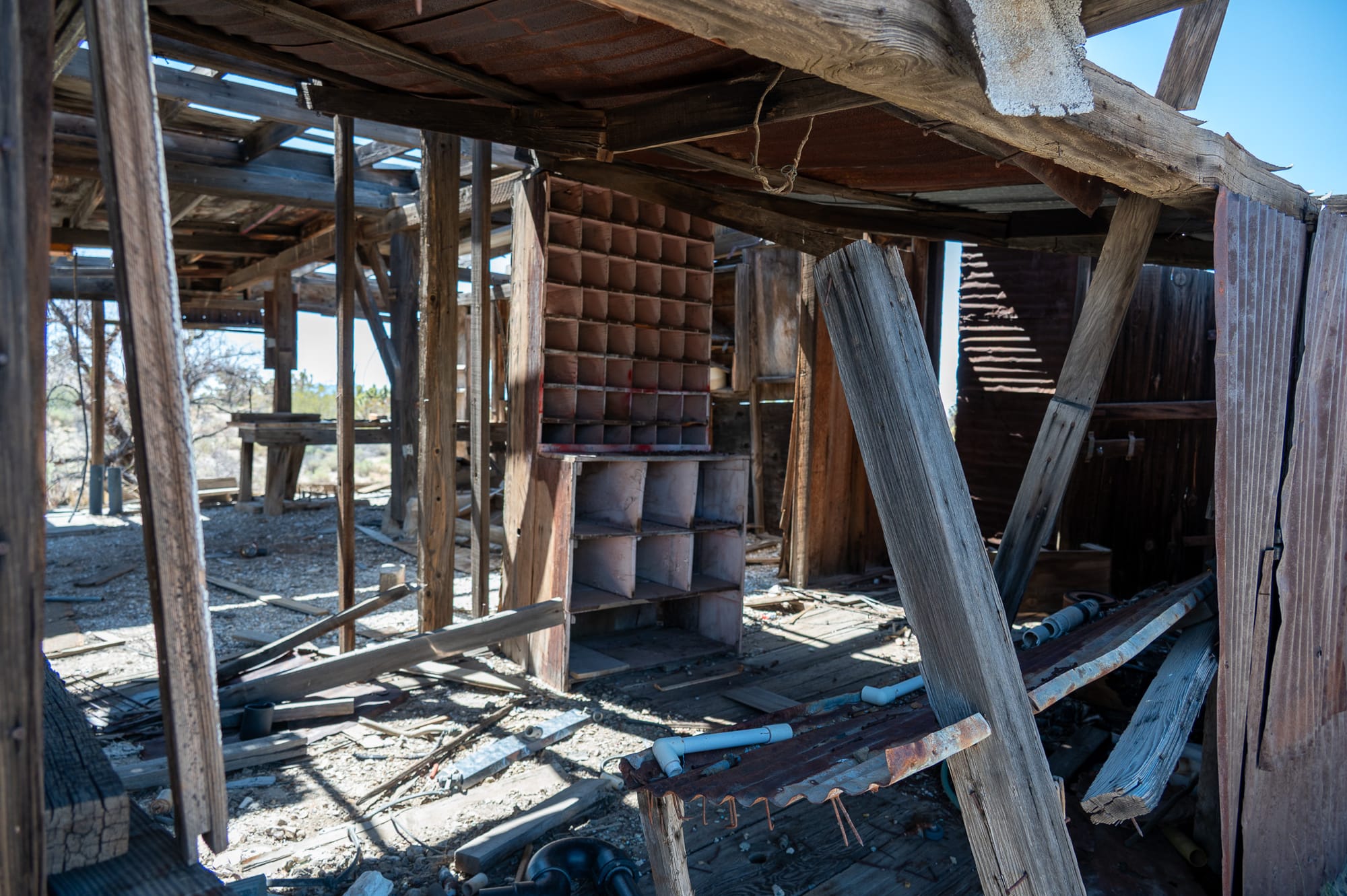
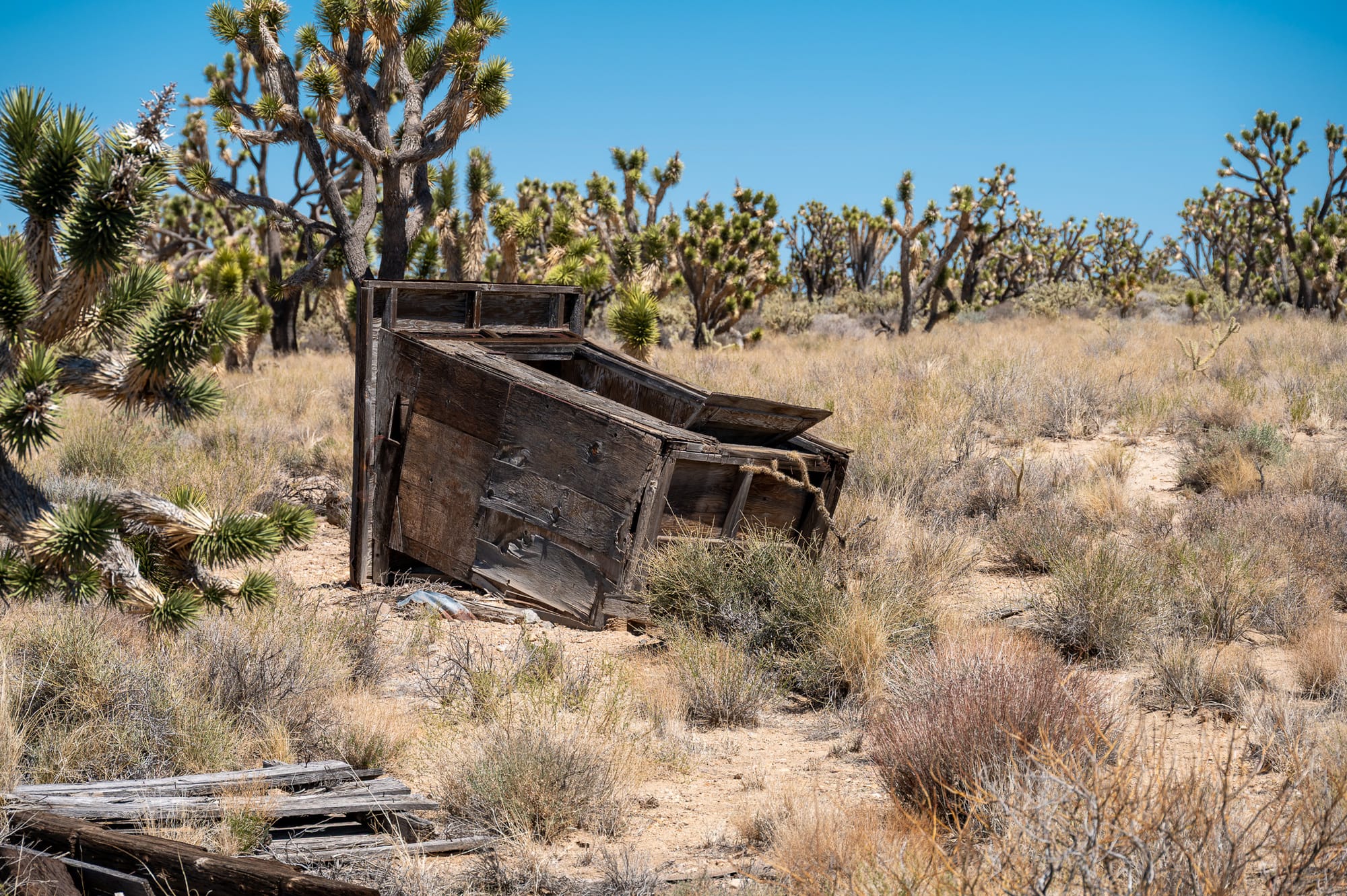
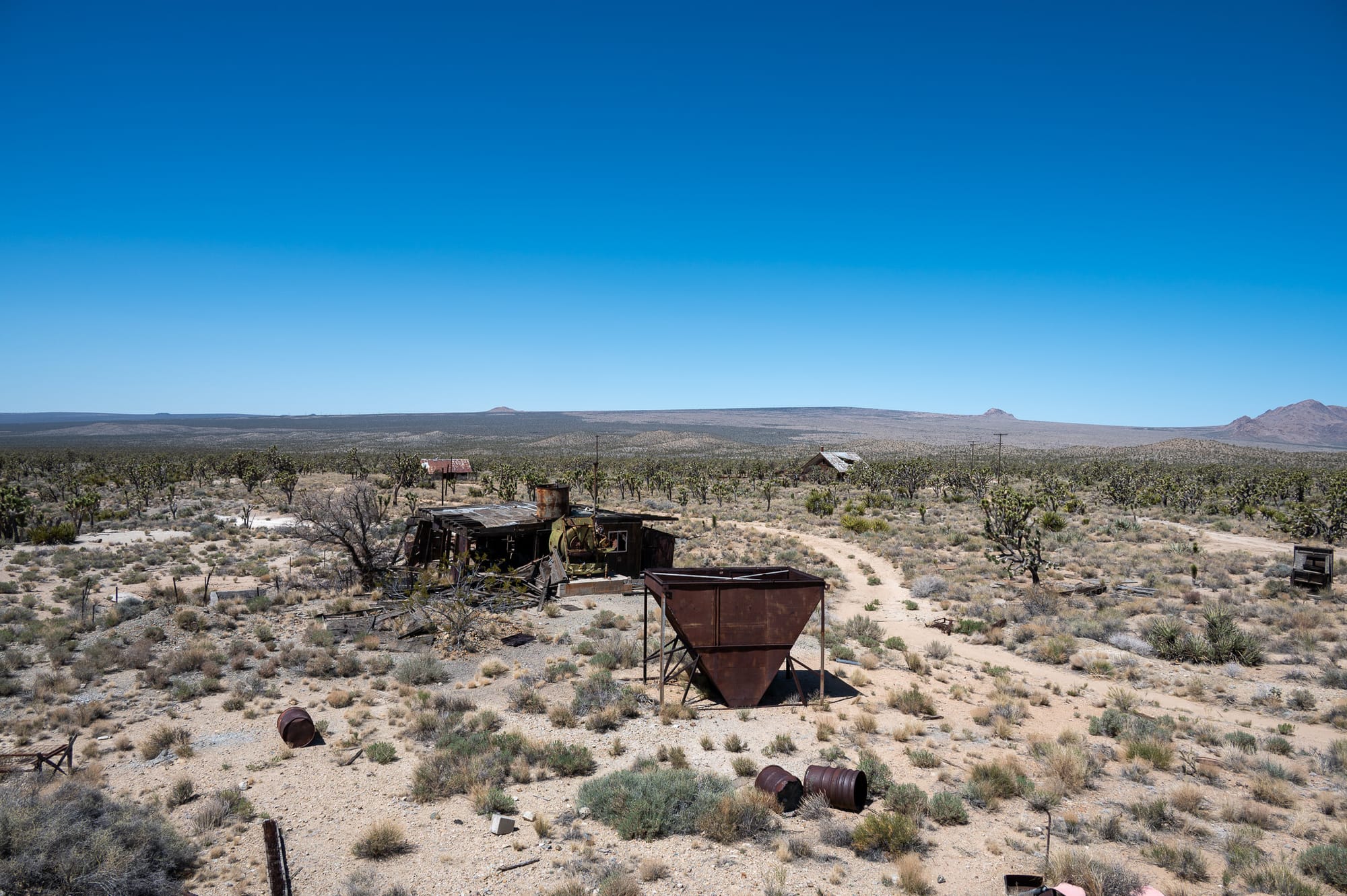
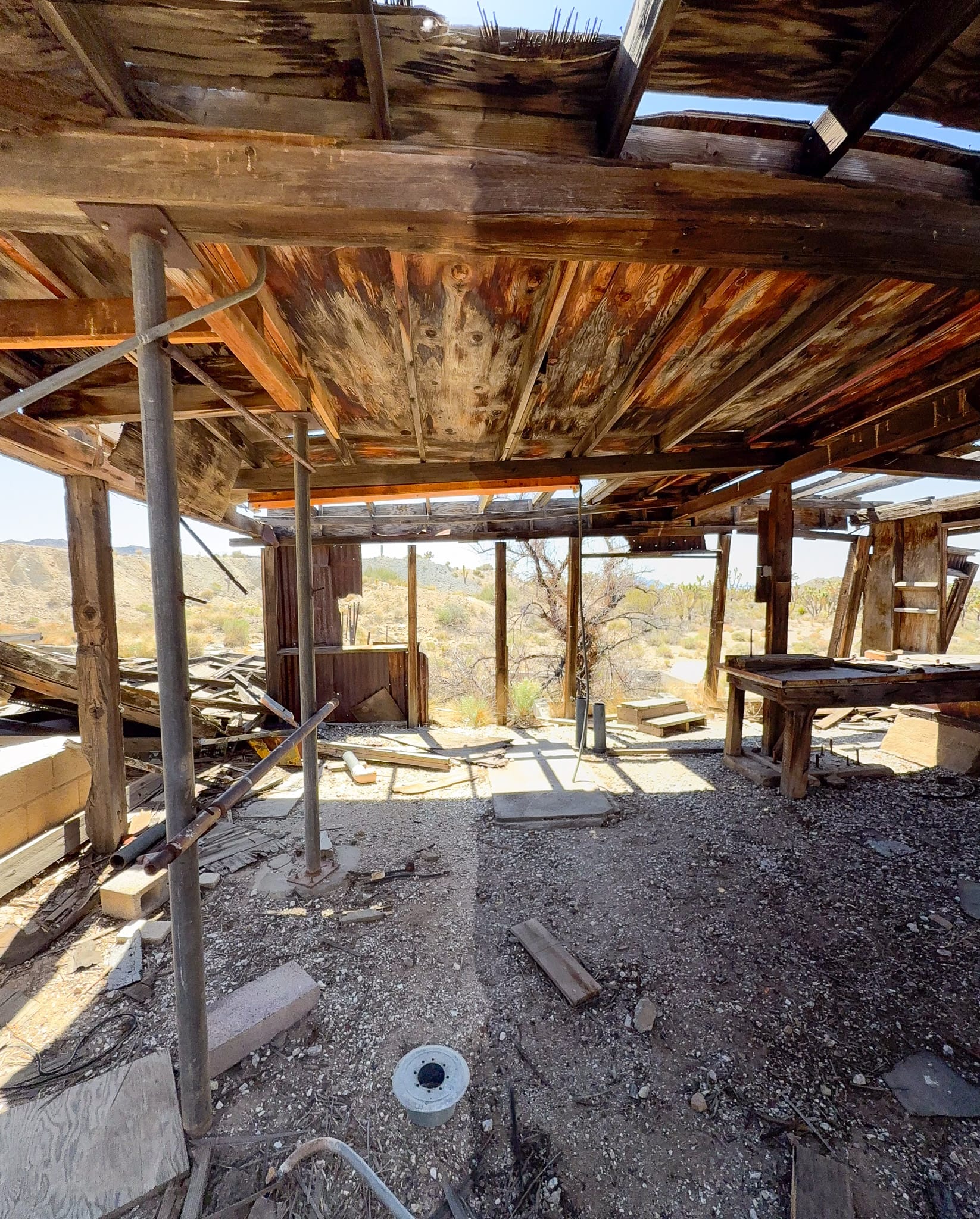
Top Left: the millsite, waste rock pile. Top Center: Looking at the front of the mill and the rock crusher from the 1950s operations. Top Right: Close up of the rock crusher. Middle Left: Inside the mill building; the cubbies are for parts. Middle Right: Tipped over outhouse at the mill. Bottom Left: Looking down at the mill from the waste rock pile. Bottom Right: Interior of the mill building.
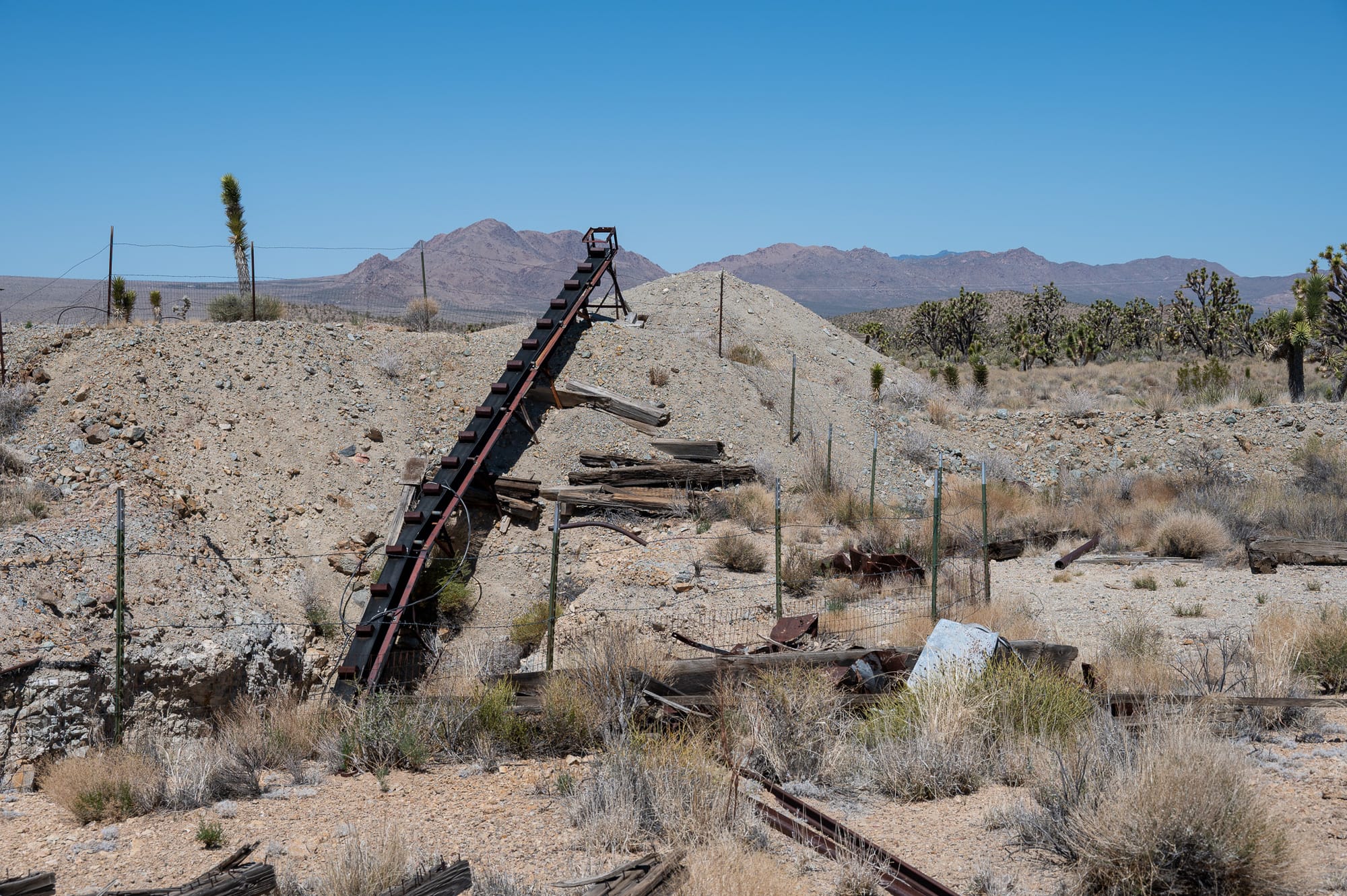
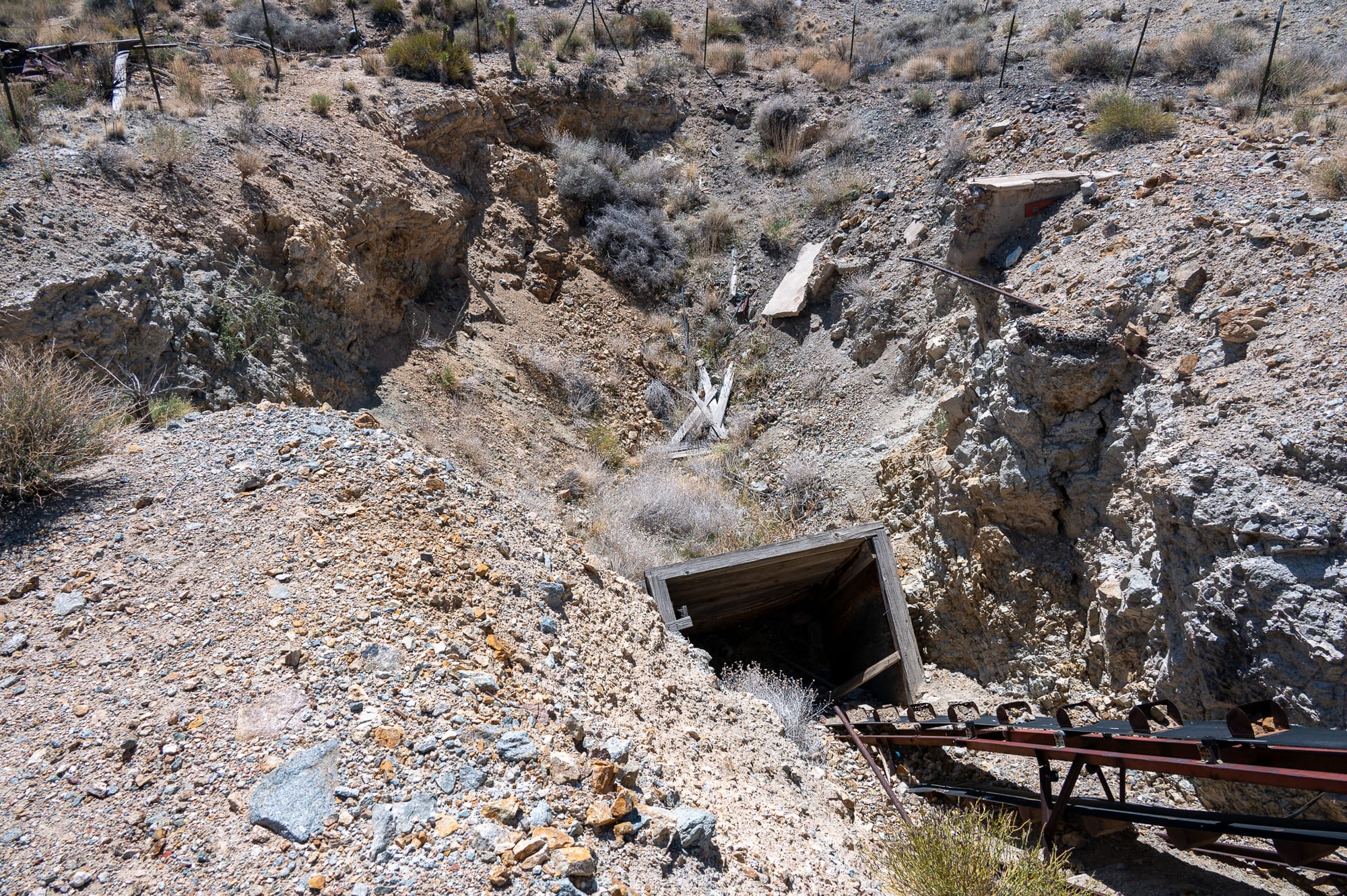
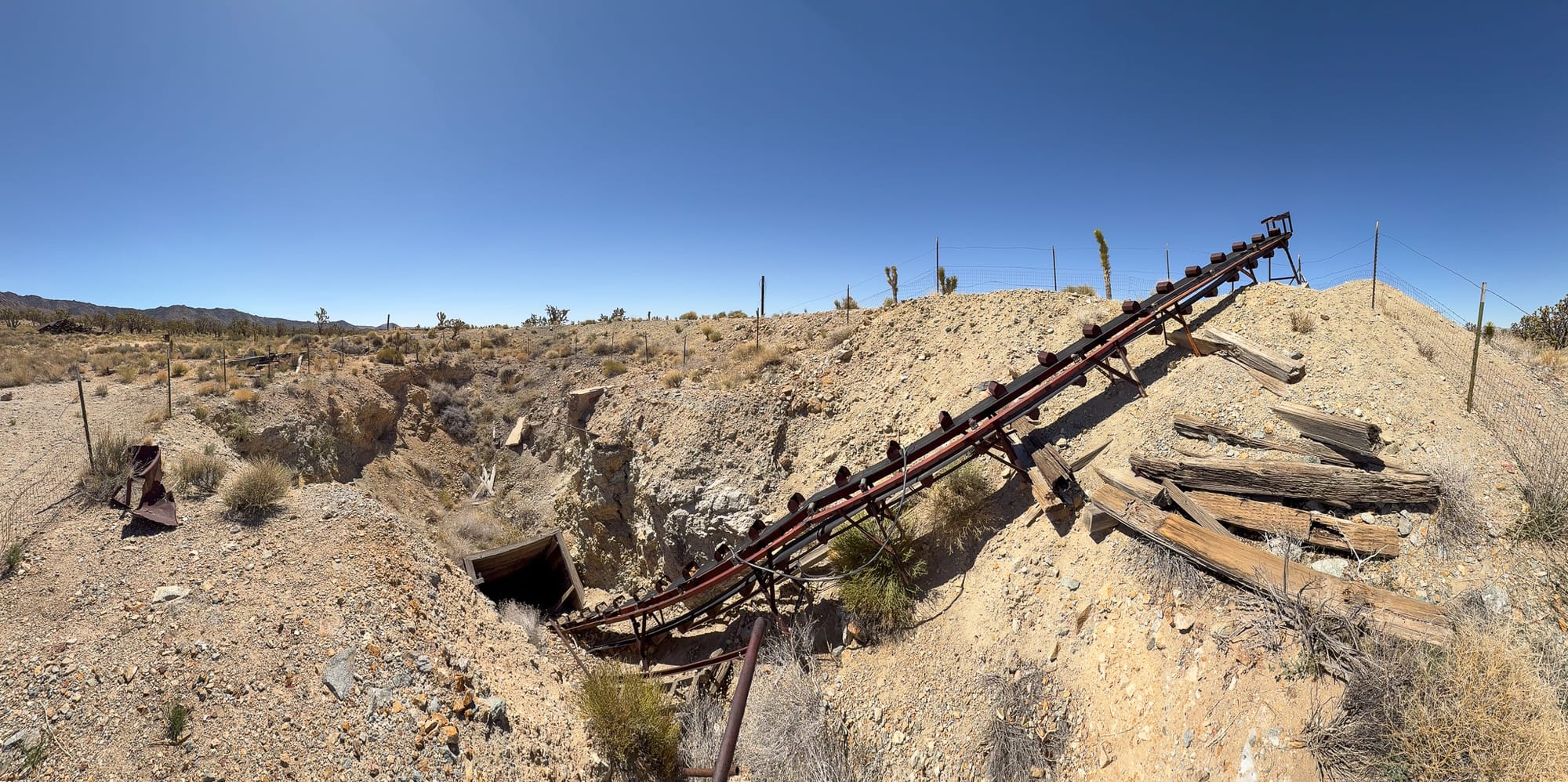
Views of the conveyer that serviced the mine workings during the 1950 revival.

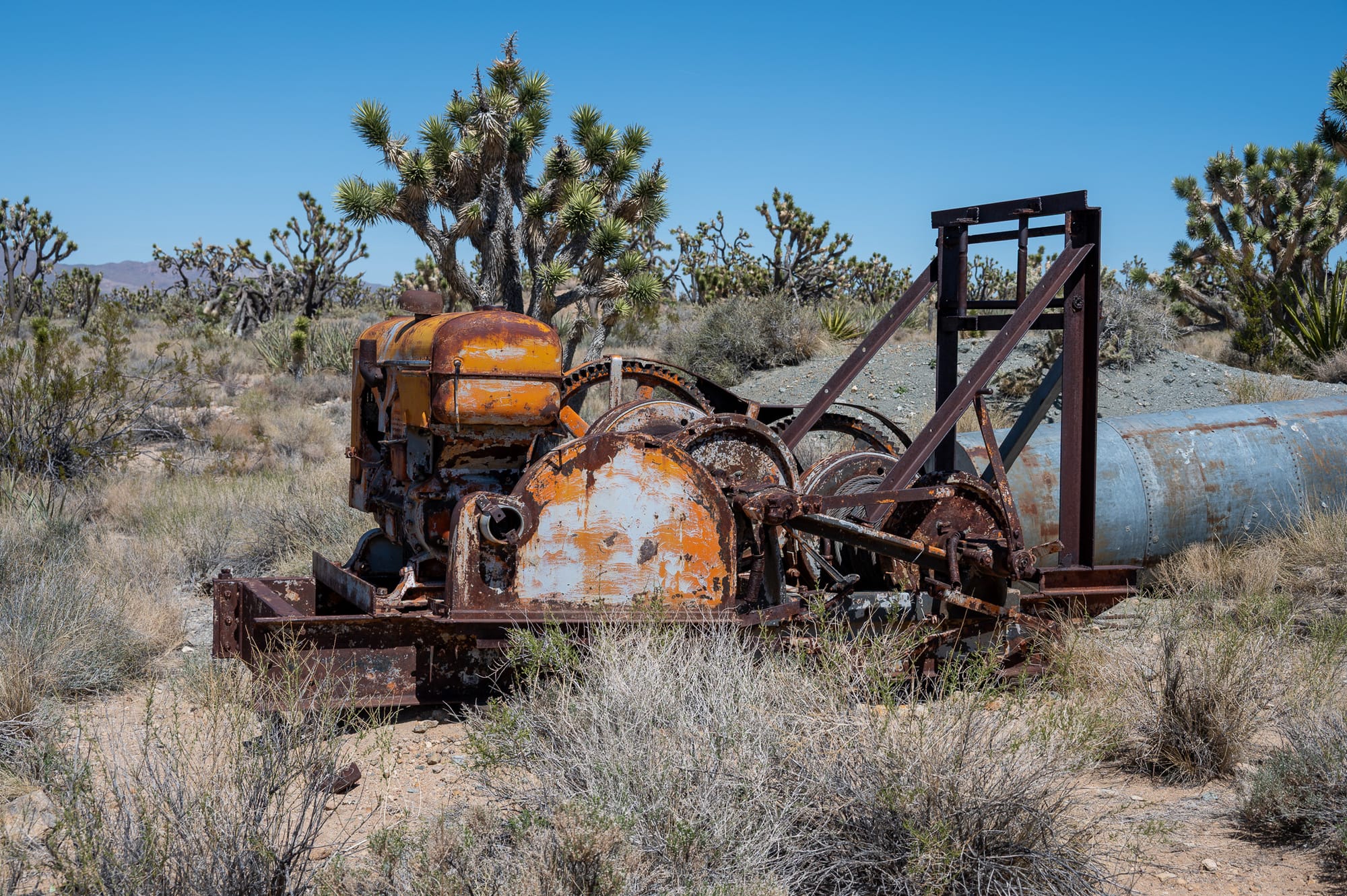
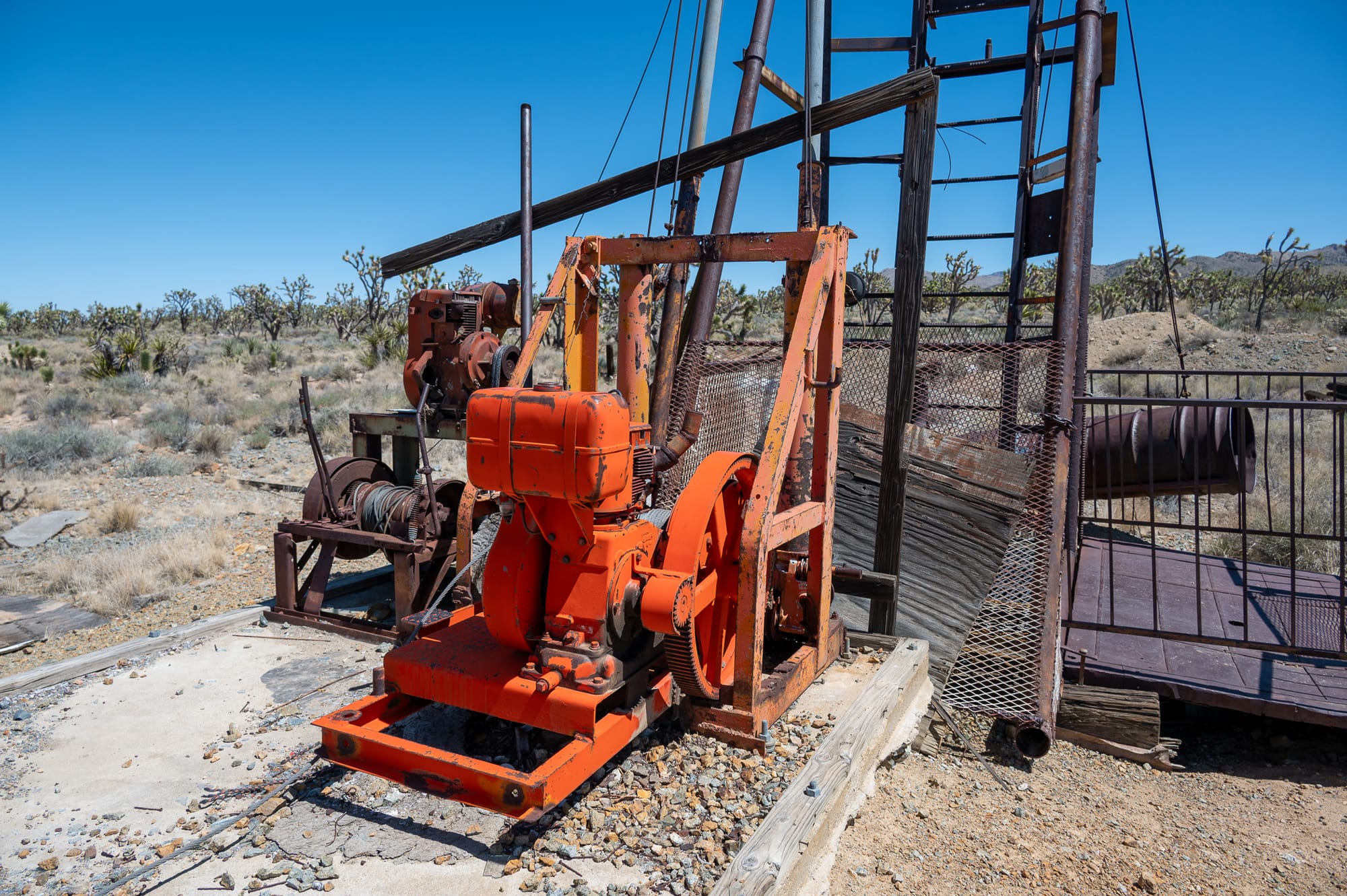
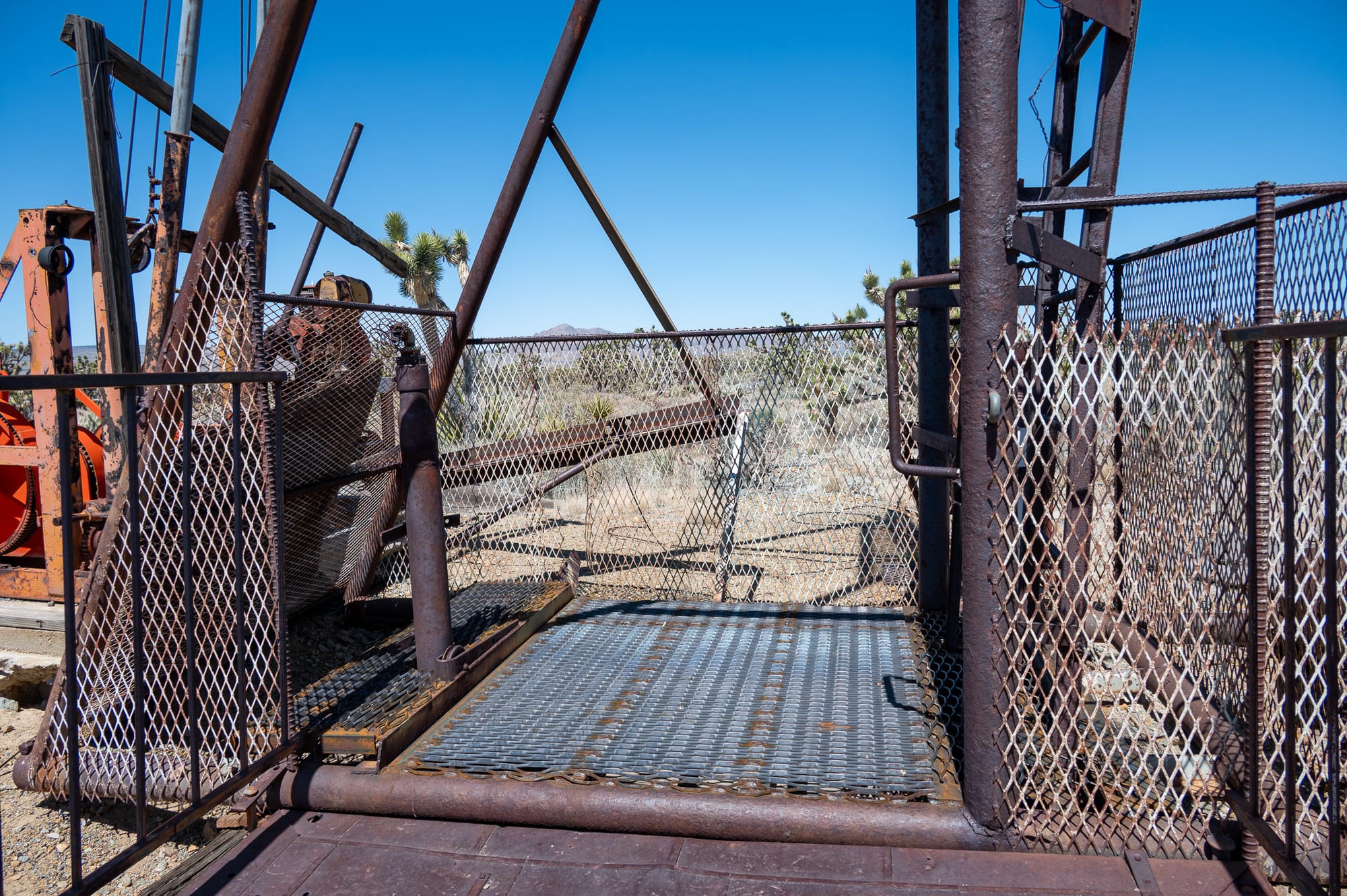
The 1950s headframe and various haulage capabilities. The big one set away from the headframe was likely for the ore lift operations. The bright orange one that's closer has a retractable crane and is likely for equipment lifting or maybe they were swapped out at some point. The compressed air reservoir is still there. The shaft is capped now but looking down I could see it's flooded.
After the 1950s, Death Valley Mine finally fell silent for good. In the 1960s and 70s, the old camp gained a reputation as a classic “ghost town” site, albeit one with a twist: it was not entirely abandoned. The claims and land remained under private ownership, and caretakers actually lived at the camp to watch over it and deter vandals. In fact, in the mid-1970s a husband-and-wife team, Dick and Bea Huff, served as mine caretakers and resided in the camp’s main house. A visiting geologist in 1975 recounted an eerie discovery made with the caretaker: dozens of tiny bird and animal skeletons far down in a mine shaft, victims of the desert who went seeking cooler temperatures and water underground and couldn’t escape after drinking from the sulfate laden pools. Such stories added to the lore of the place. By the time the Mojave National Preserve was established in 1994, Death Valley Mine had already cemented itself as part of the Mojave’s forgotten history.
The Ruins Today: Preservation and Access

Today the Death Valley Mine site survives as a remarkably intact ghost town. Several buildings still stand, weathered but recognizable: the large two-story wooden house (with a broad porch, now partially collapsed and entwined with grapevines) where the mine’s manager lived, a smaller one-story dwelling nearby, and a number of outbuildings such as workshops, sheds, a possible root cellar, and even old livestock pens like a chicken coop. Scattered about are the rusted remains of mining equipment" an ore crusher here, an old headframe there, and tailings piles from long-ago processing. The scene is one of arrested decay, offering a tangible “time capsule” of a 1900s desert mining camp.


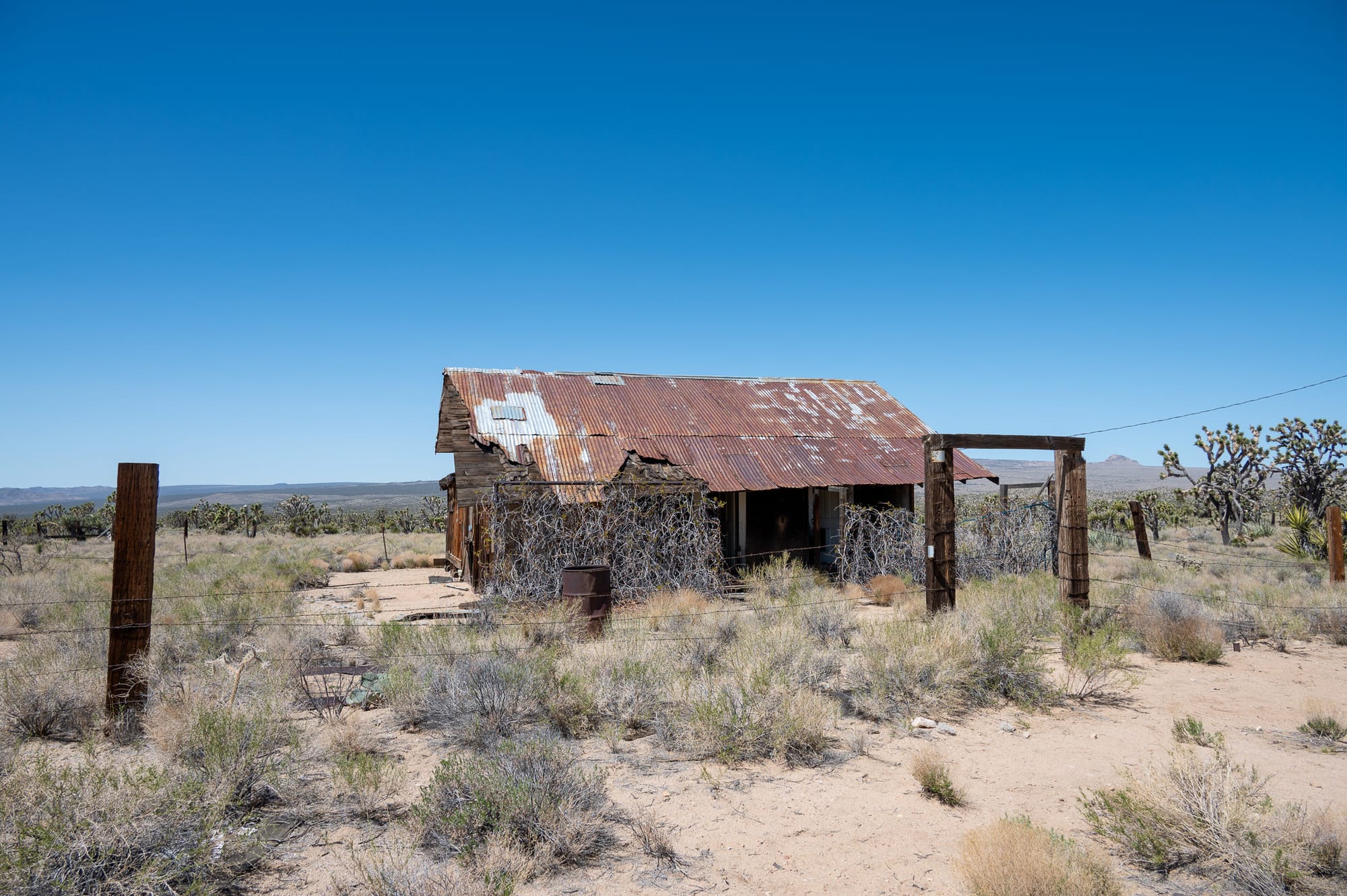
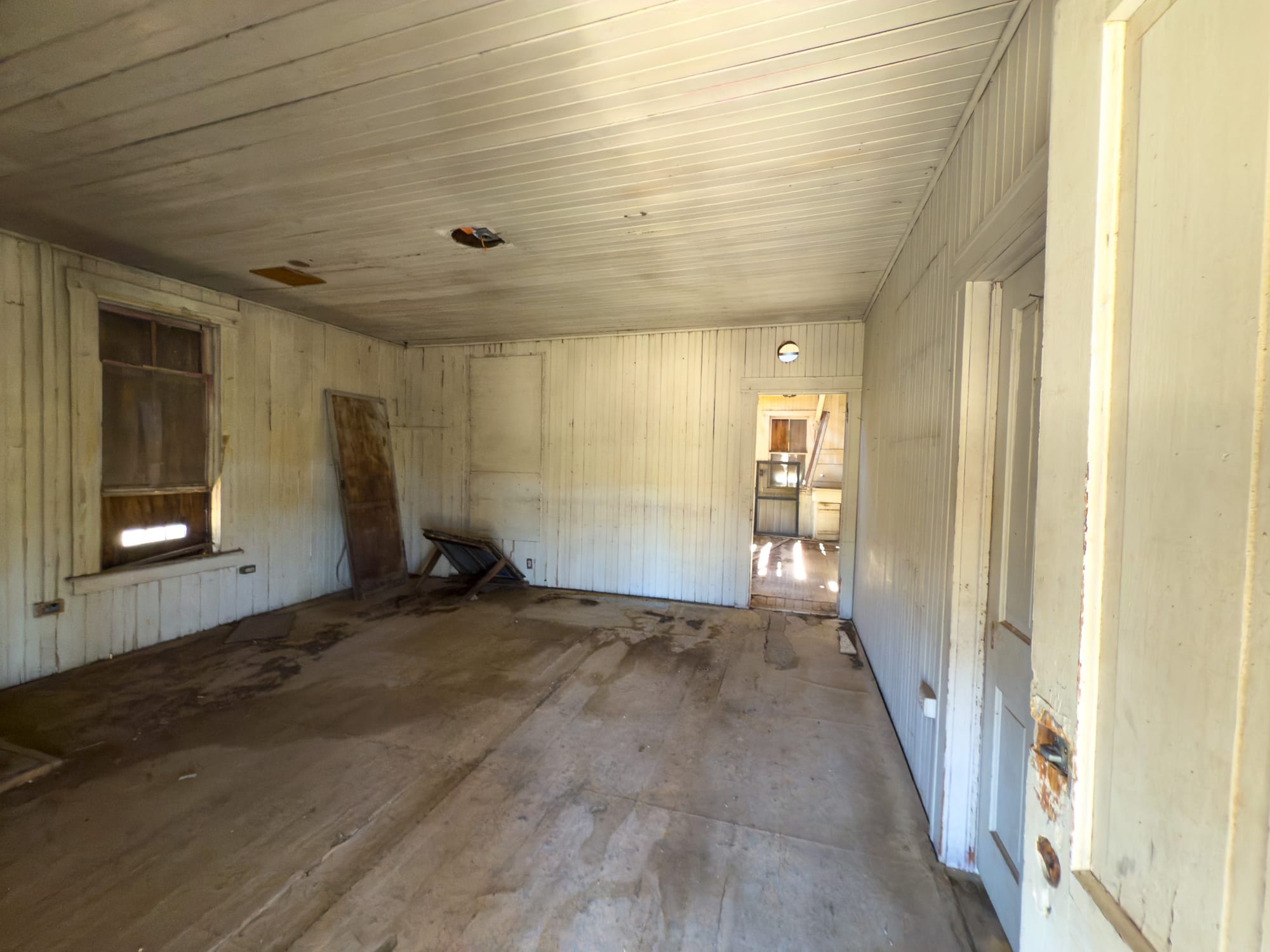
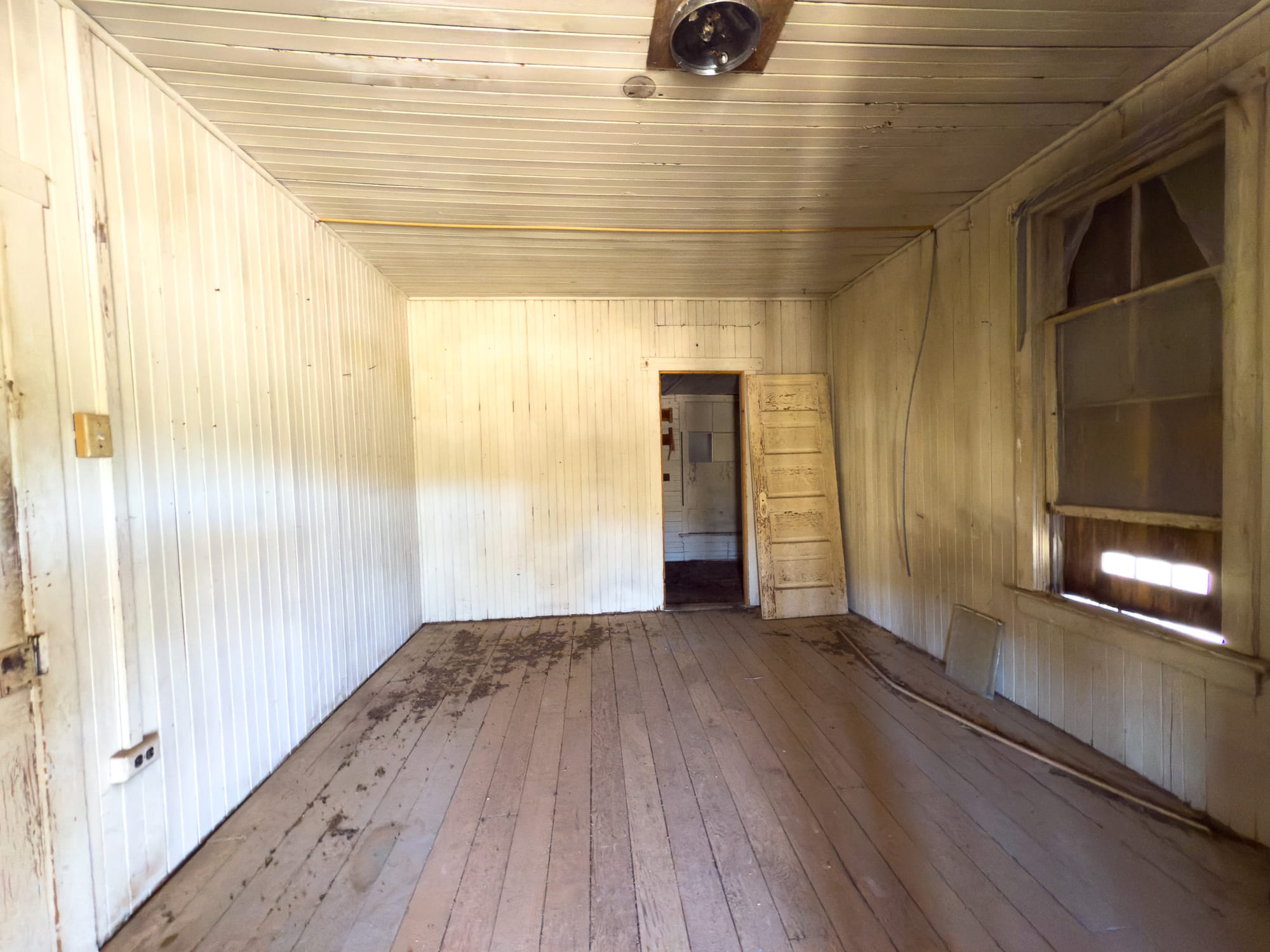
Various shots of the crew bunkhouse that's a little down from the main house.
Importantly, these remains are now under the protection of the Mojave National Preserve (managed by the National Park Service). In recent years the Park Service and volunteers have taken steps to preserve and clean up the site. In 2020, for example, a volunteer effort removed over 15 tons of trash and debris from Death Valley Mine and other nearby historic sites, clearing out decades of accumulated garbage and remnants of a past fire. Park rangers have also stabilized certain structures: new wood bracing, fresh boards over windows, and sturdy mesh vents have been added to the main house to keep out wildlife and slow the deterioration. To prevent accidents and vandalism, the NPS fenced off the core area of the camp a few years ago. Visitors today will encounter “No Trespassing: 24 Hour Security” signs around the buildings, indicating an effort to both protect the public (there are many open shafts and unstable structures) and safeguard the historical value of the site. Unfortunately, as is the case with many attempts to limit access in these remote locations, all of that has been cut and removed by visitors and the site is essentially unsecured (don't be the person that abuses this place). There is hope that the site could be interpreted for the public in the future; but, for now, it remains a ghost town held in suspended animation.

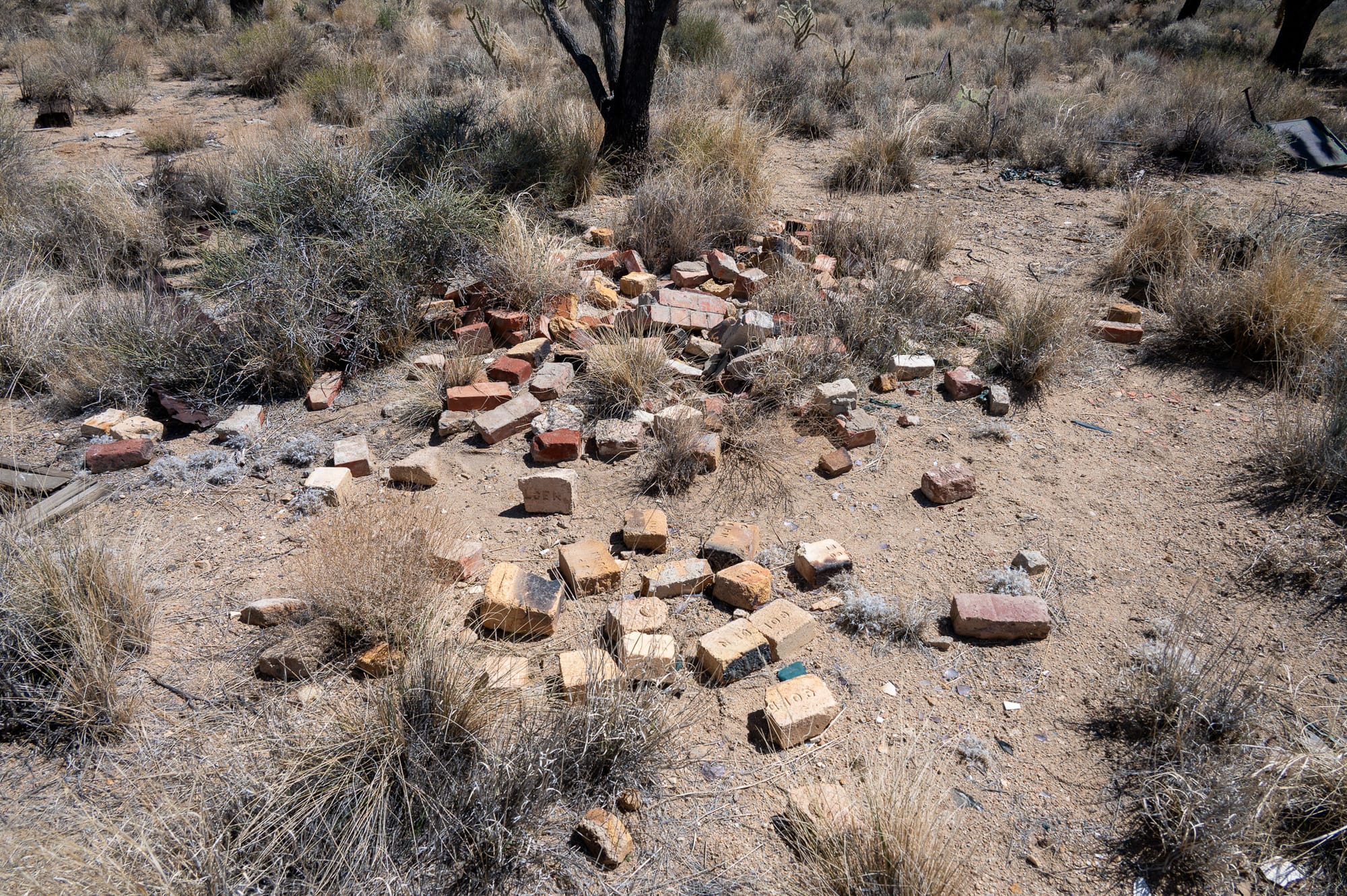
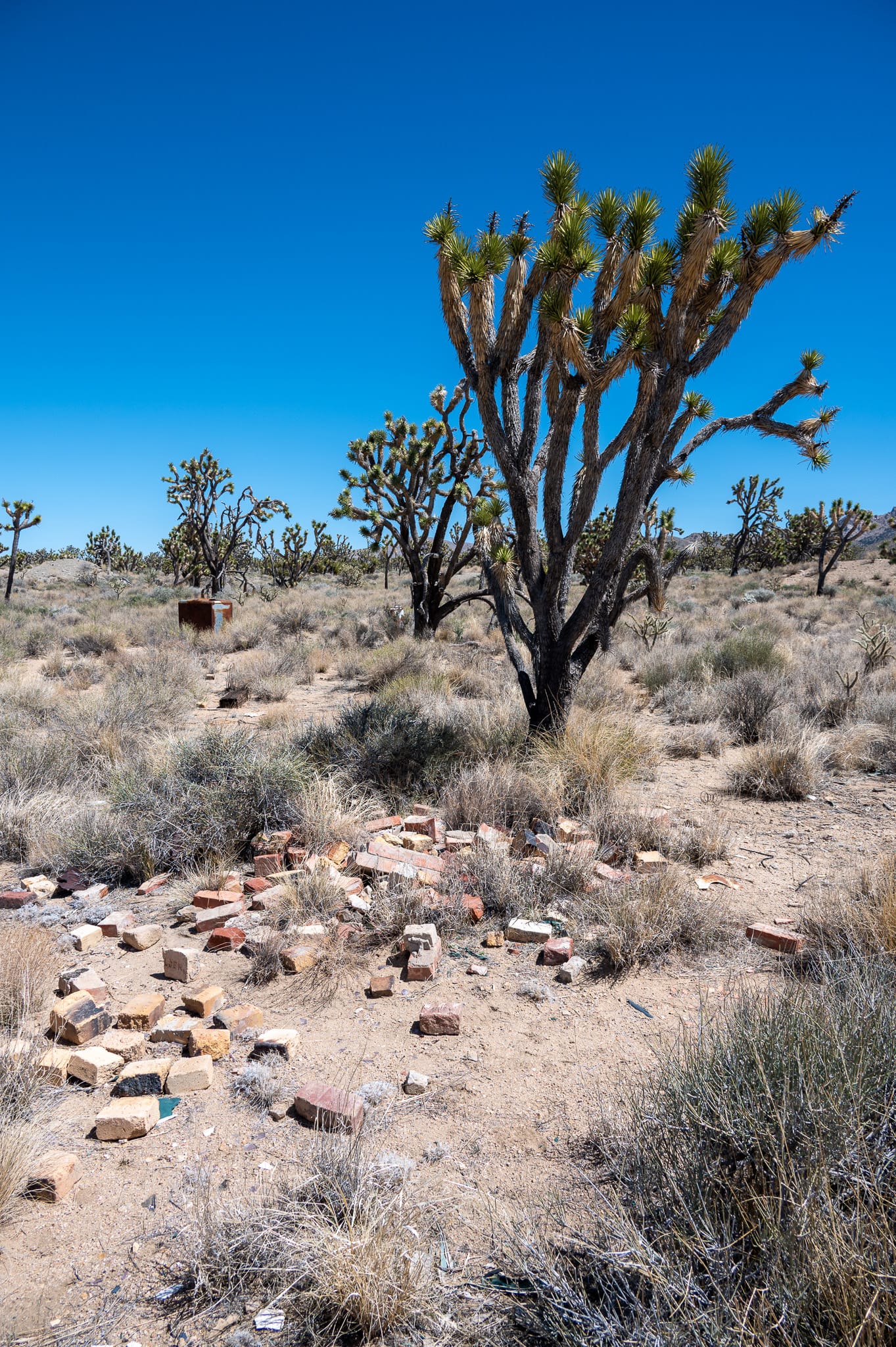
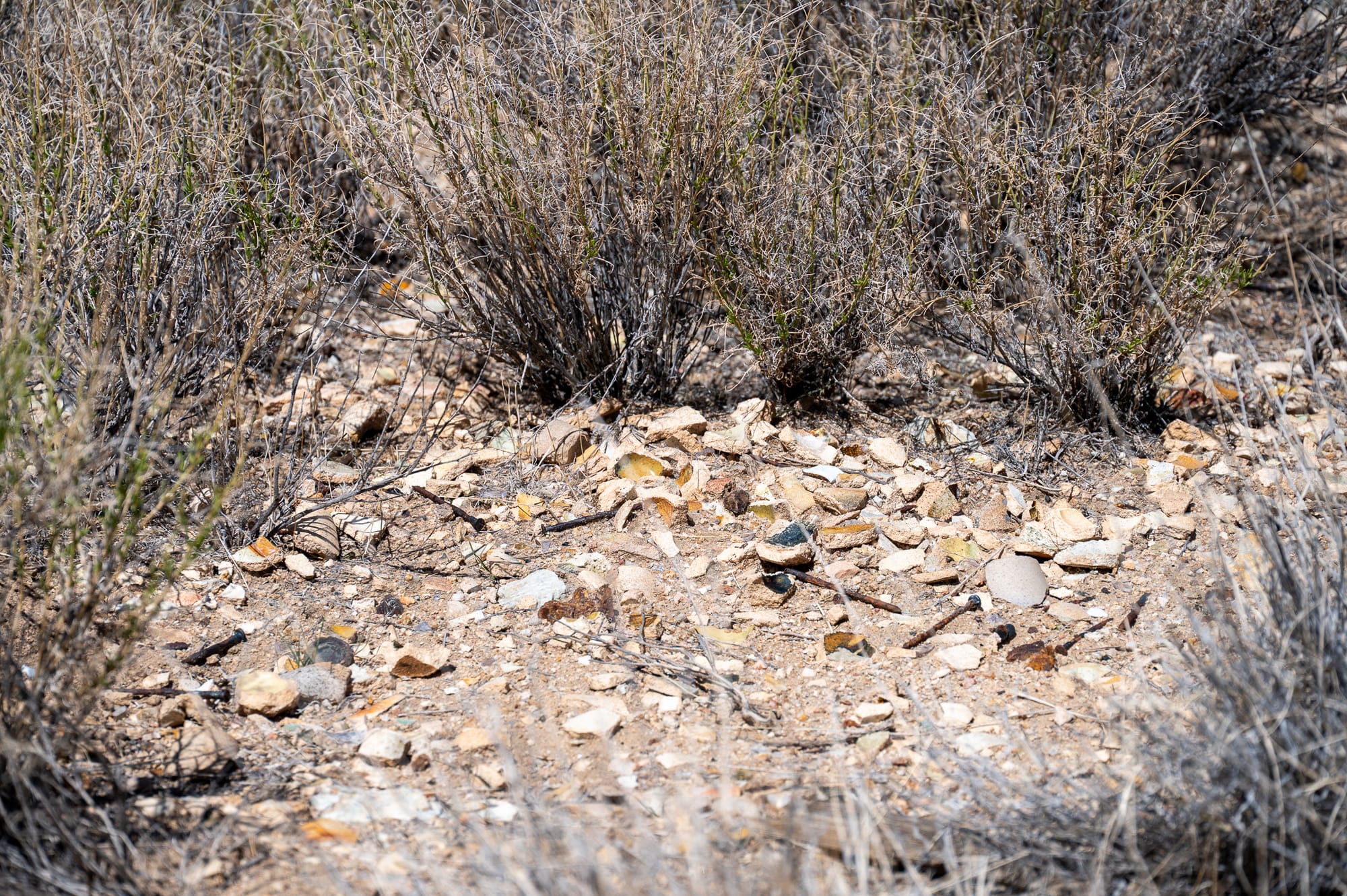
Collapsed assay office based on the (collapsed) fire brick furnace, ventilation gear, and broken assay cups nearby. The bed frames, I believe, were not originally in this building and got moved or discarded there.
In the Mojave Landscape: Context and Visiting
A rough dirt trail winds through a Joshua tree forest on the approach to Death Valley Mine. The mine lies in a remote, high-desert area of the Mojave National Preserve, far from the actual Death Valley. Nestled among creosote bushes and towering Joshua trees, Death Valley Mine sits at about 4,500 feet elevation on the flank of Cima Dome and the New York Mountains. The surrounding landscape is classic Mojave Desert, arid and sublime. In every direction, austere valleys and granite mountains frame the view, and in spring the desert floor blooms with surprising life. Reaching this forgotten place requires a bit of adventurous spirit. From the paved Kelso-Cima Road, an unmarked dirt turnoff leads west across the railroad tracks onto a 2.5-mile primitive road that climbs to the old camp. The trail is rugged but generally passable to high-clearance vehicles, and was historically listed as doable even with 2WD from the Cima side (though 4WD is recommended if coming from the south or after rains).
Despite its relative accessibility, the location feels very remote. There are no services or facilities nearby. The nearest outpost, the tiny community of Cima, is essentially a ghost town itself now (and its historic store sadly burned down in 2020). Travelers should come prepared with water, and be mindful of desert hazards (from summer heat to the protected desert tortoise that may share the trail). The Mojave National Preserve allows visitation to the site, but as always, respect for historic artifacts is paramount. Everything at Death Valley Mine, from the rusted boiler to the tiniest antique bottle fragment, is protected by federal law. Take only photographs, and leave the site as you found it. This ensures that the “texture” of this forgotten desert place remains for others to appreciate. Rangers periodically monitor the area.
Legacy of a Desert Mine
In the grand scope of mining history, Death Valley Mine was a modest operation. It never rivaled the famous bonanzas of Nevada or the Mother Lode of California. Yet, its story encapsulates the boom-and-bust cycle that swept the deserts of the American West. A flash of discovery in 1906 brought hope and hard work to a remote corner of the Mojave, creating a little community where there was none. Lives were built here: ore was dug from the earth, fortunes were dreamed of, and a network of railroads and wagon roads linked this camp to the wider world. Then, as the ore played out and fate intervened, the people moved on, leaving their buildings and machinery to slowly surrender to sun, wind, and time.
Today, the Death Valley Mine site stands as an outdoor museum of that era, a place where you can walk among weather-beaten structures and almost hear the echoes of hammer blows and ore carts clattering. Its relationship to the Mojave National Preserve is one of careful stewardship: the Preserve protects this cultural resource as part of the region’s heritage, recognizing that tales of miners and prospectors are as integral to the Mojave’s identity as its natural wonders. For visitors with a passion for history and an appreciation for the romance of desert ruins, Death Valley Mine offers a tangible connection to the past. In the silence of this high desert locale, with only the breeze in the Joshua trees and perhaps a distant coyote’s yelp, one can easily imagine the Dawson brothers and J.L. Bright swapping stories over a campfire, convinced that riches lay just around the corner.
While Death Valley Mine may be overshadowed by its more famous namesake, it remains an informative and evocative historic site, truly a forgotten desert outpost that has survived into the 21st century. As preservation efforts continue, this ghostly mining camp will hopefully endure, allowing future generations to explore and learn from the history etched in its weathered timbers and sun-scorched artifacts. The Mojave Desert has many such hidden stories, but few are as accessible and well-preserved as the Death Valley Mine, where the past and the desert landscape meet in a stark, beautiful union.
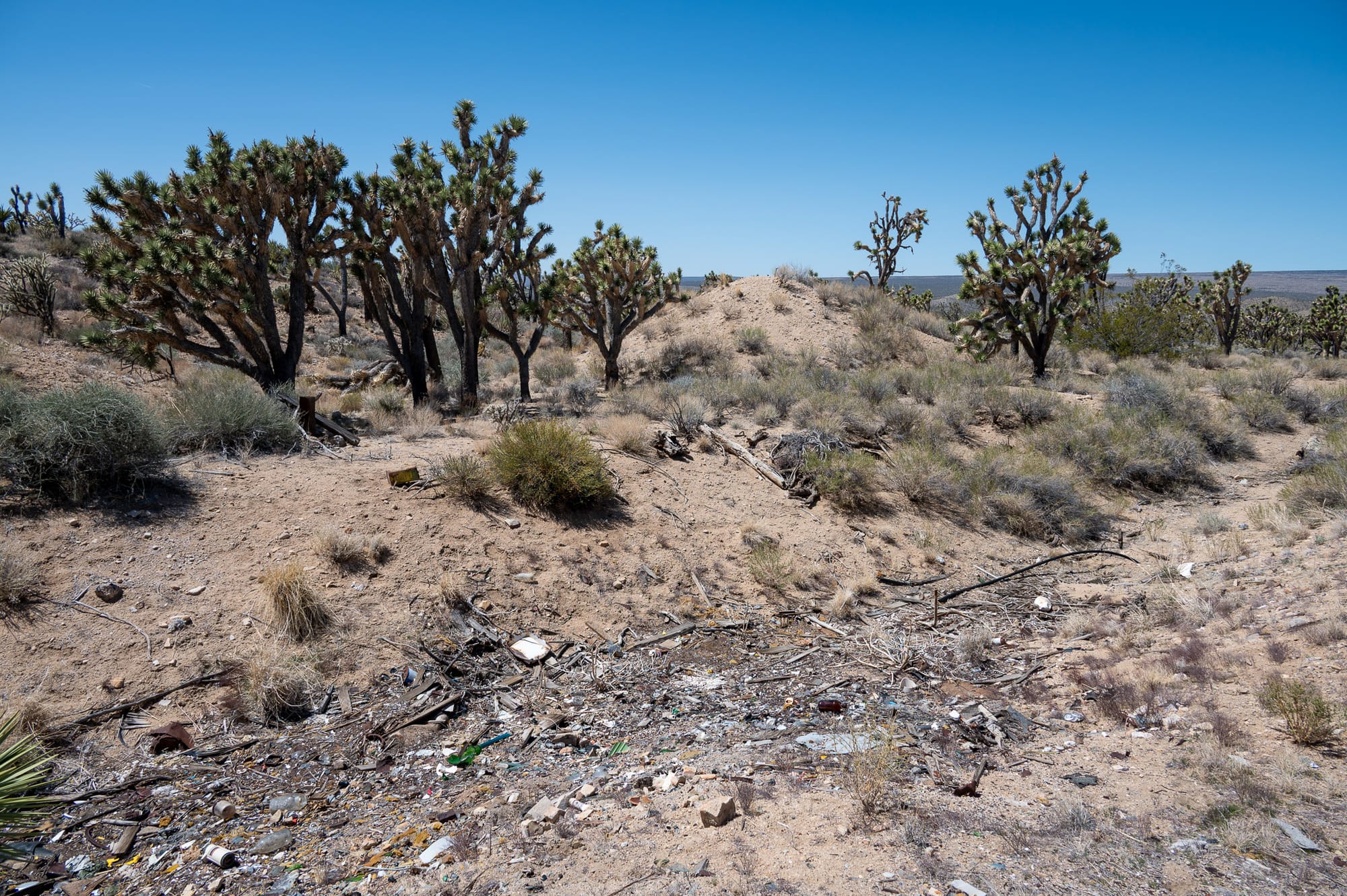
Sources
- Carey, Lori. “Exploring Death Valley Mine and the Mojave’s Best Off-Roading.” DrivingLine, 2021.
- Lardner, David Clayton, and Lewis Lawyer. Desert Fever: An Overview of Mining in the California Desert. U.S. Bureau of Land Management, 1984.
- Mojave National Preserve Conservancy. “Mojave National Preserve: History and Culture.” MojavePreserve.org, 2020.
- National Park Service. “Volunteer Cleanup at Historic Mining Sites in Mojave National Preserve.” NPS.gov, 2020.
- Russell, Carl Parcher. One Hundred Years of Mining in the East Mojave Desert. California Division of Mines and Geology, 1967.
- Vredenburgh, Larry M., et al. Historic Mining Camps of the Mojave Desert: Death Valley Mine and Dawson Camp. Mojave Desert Historical Society, 1992.
